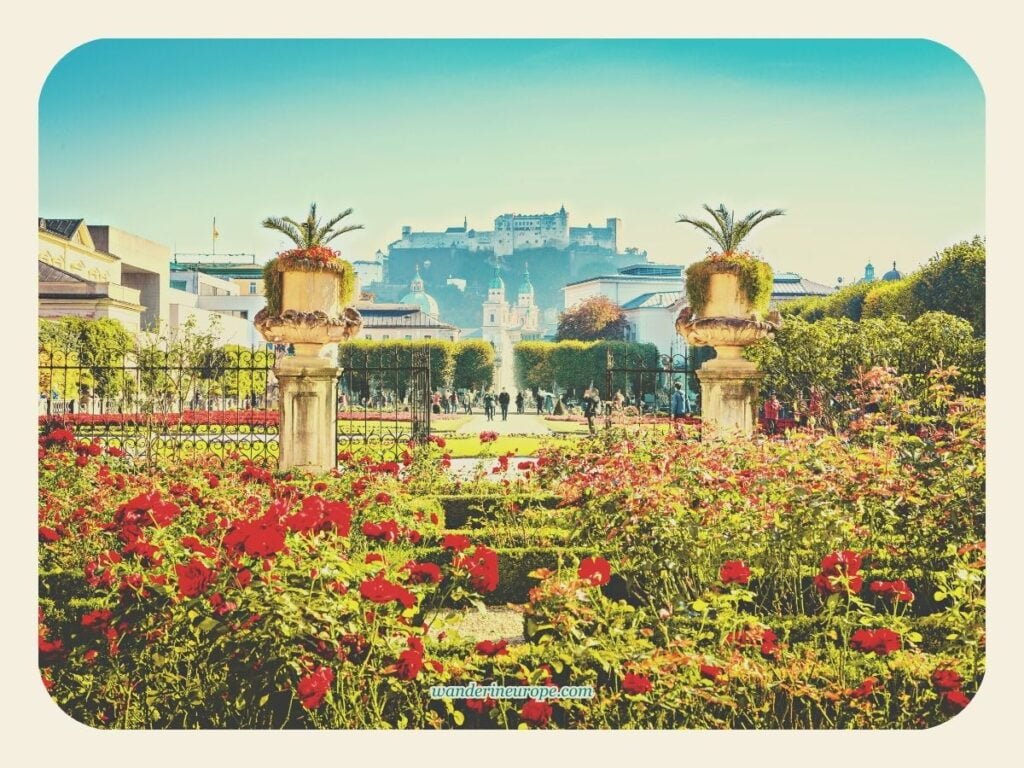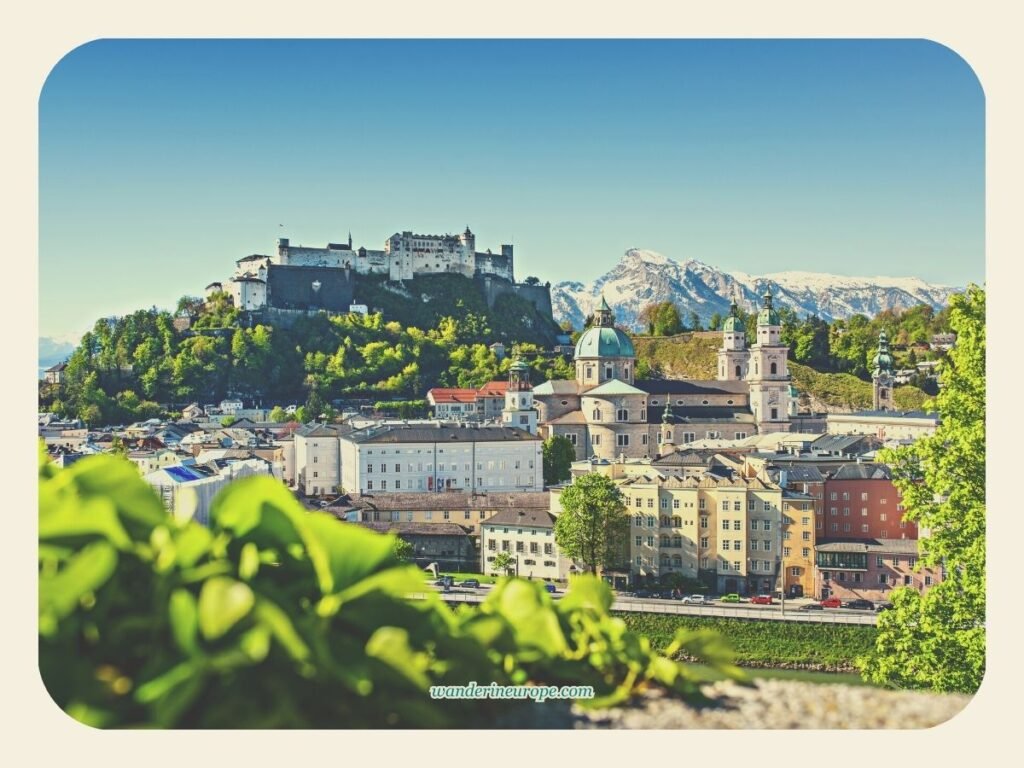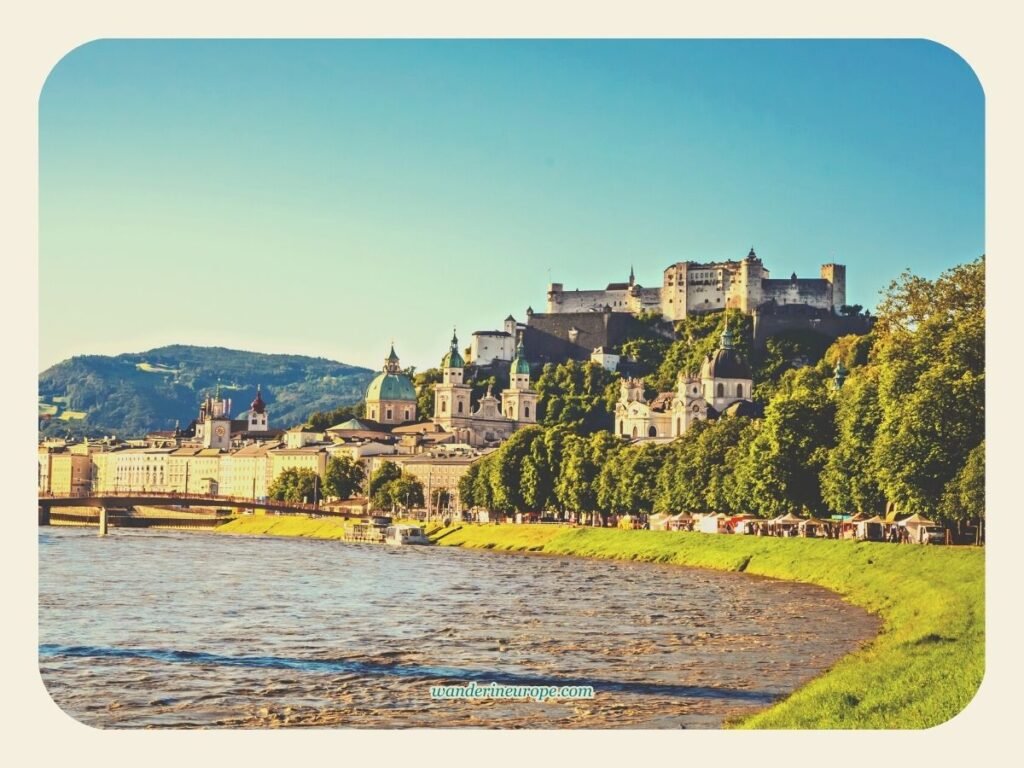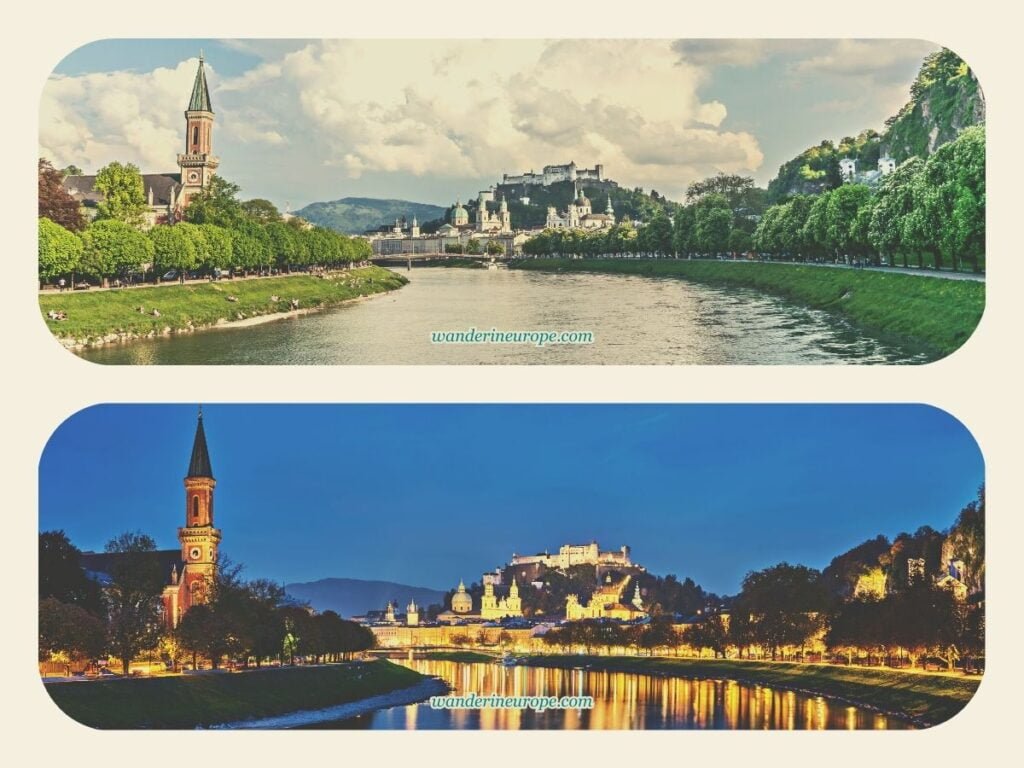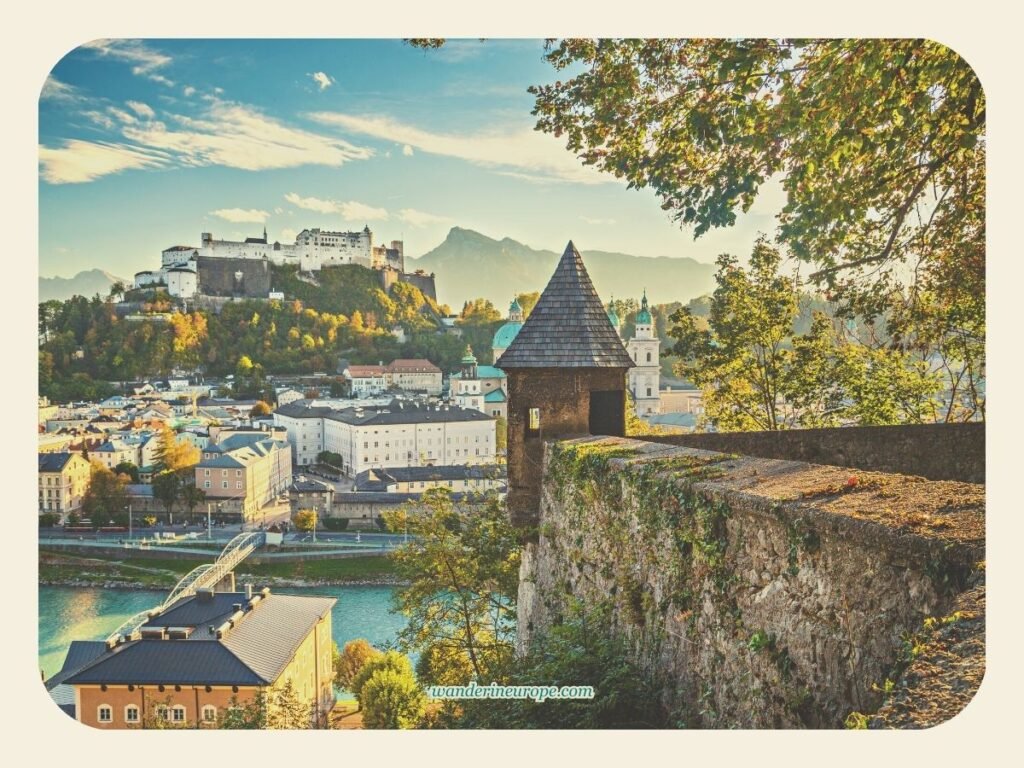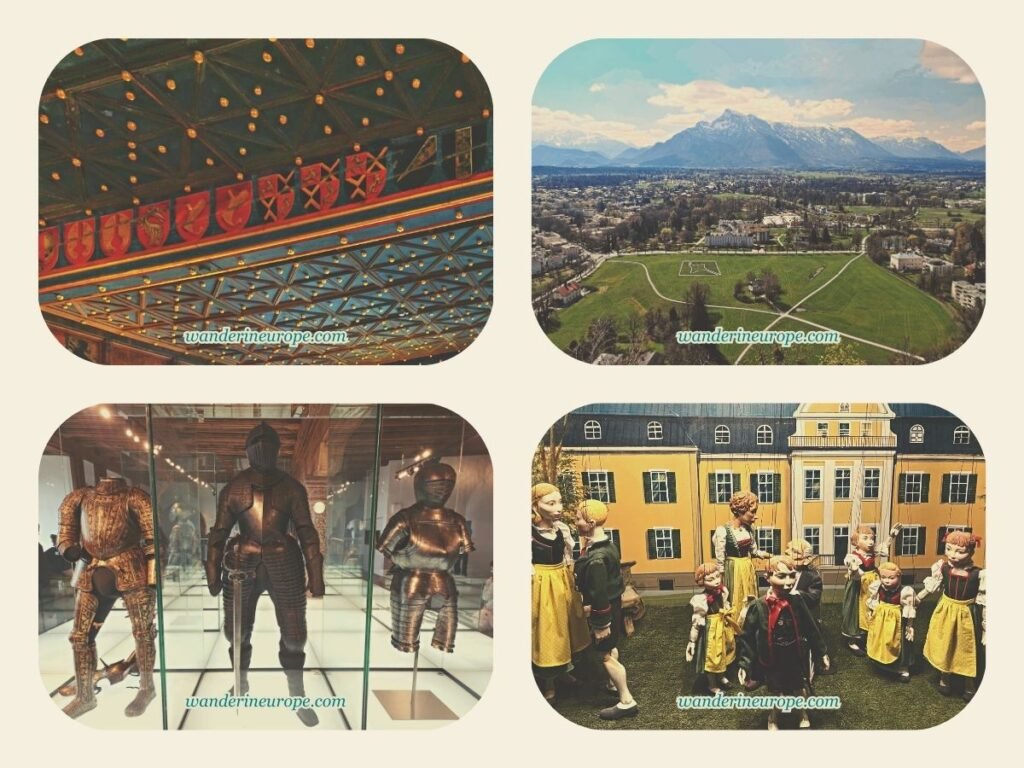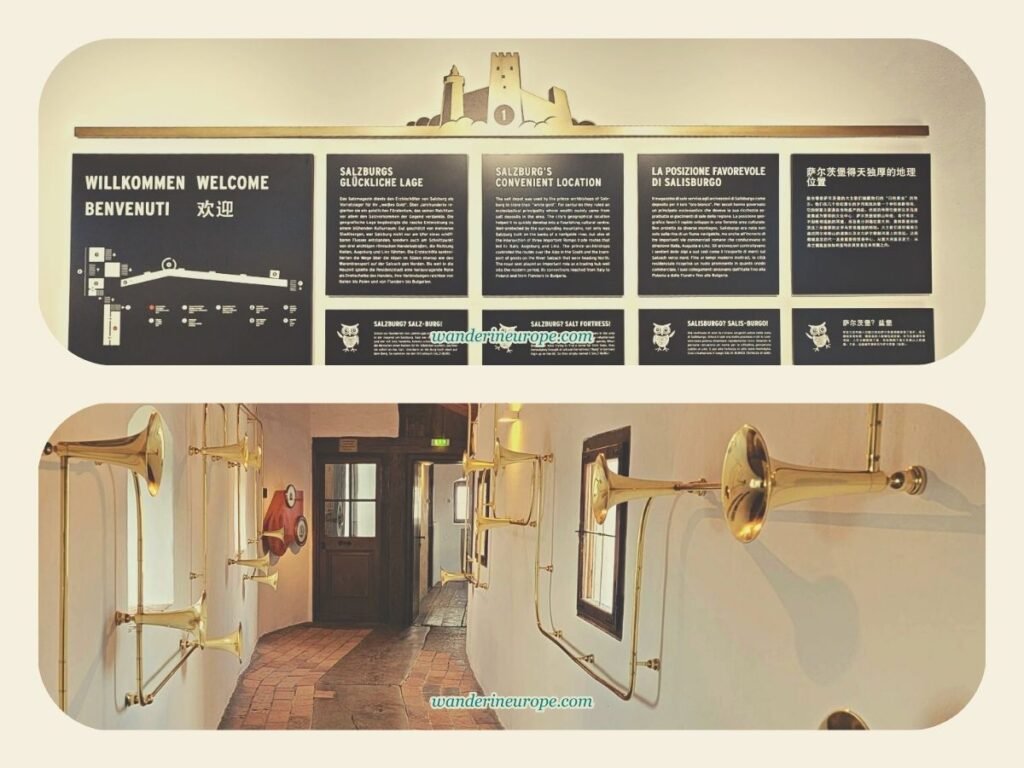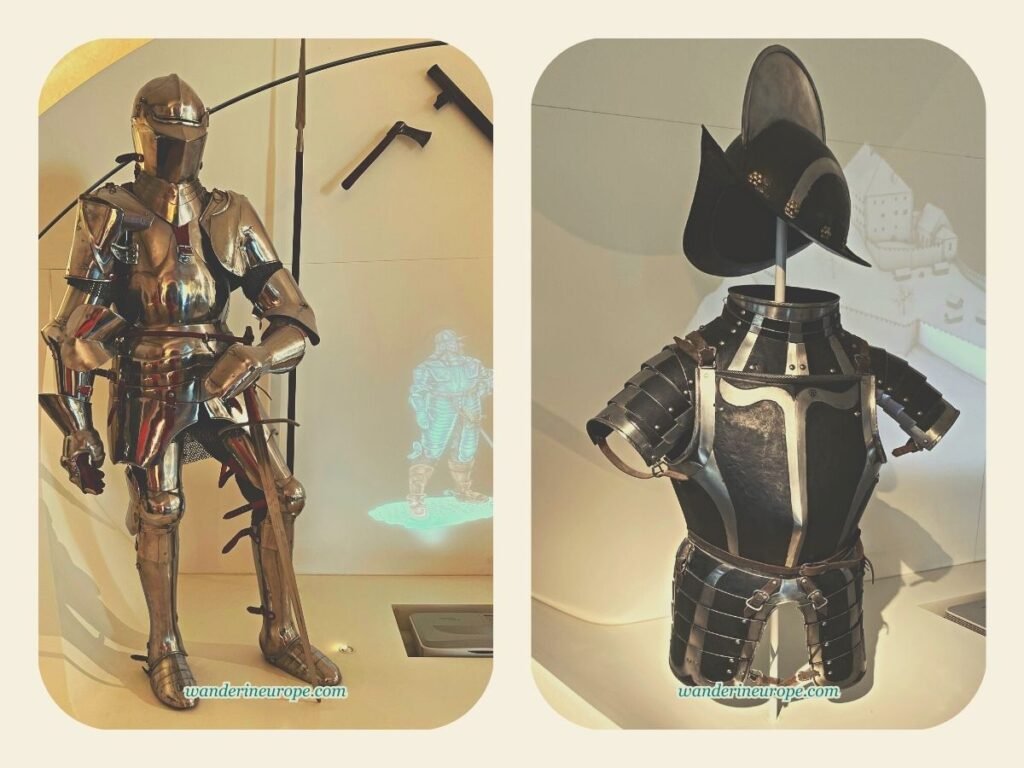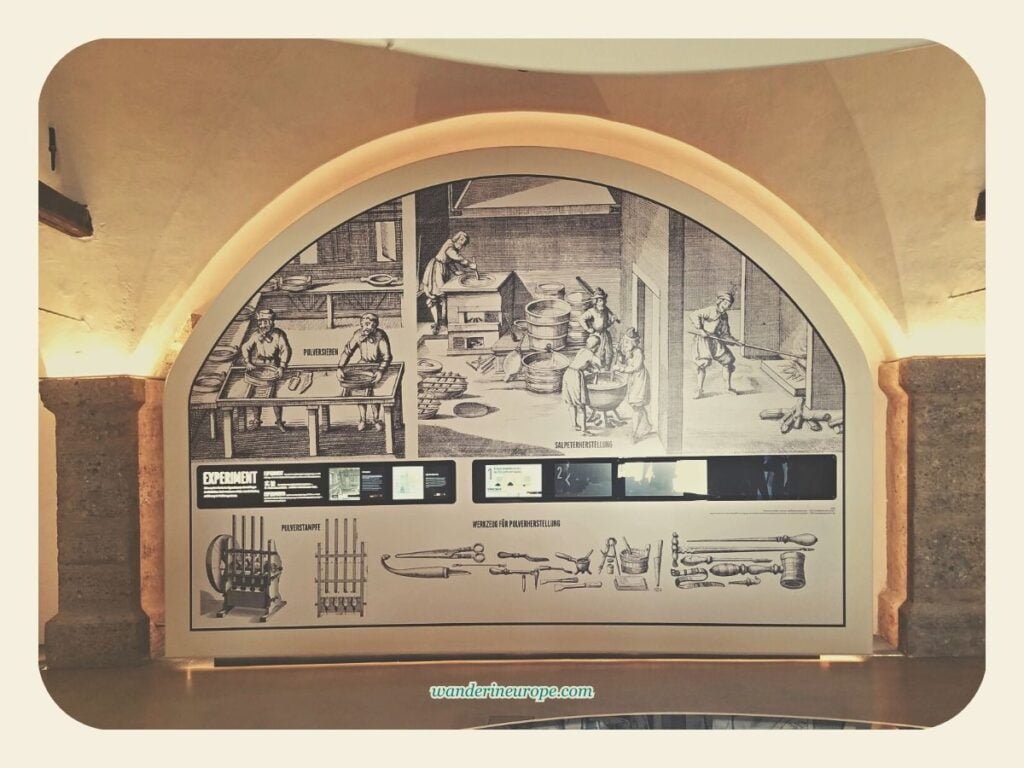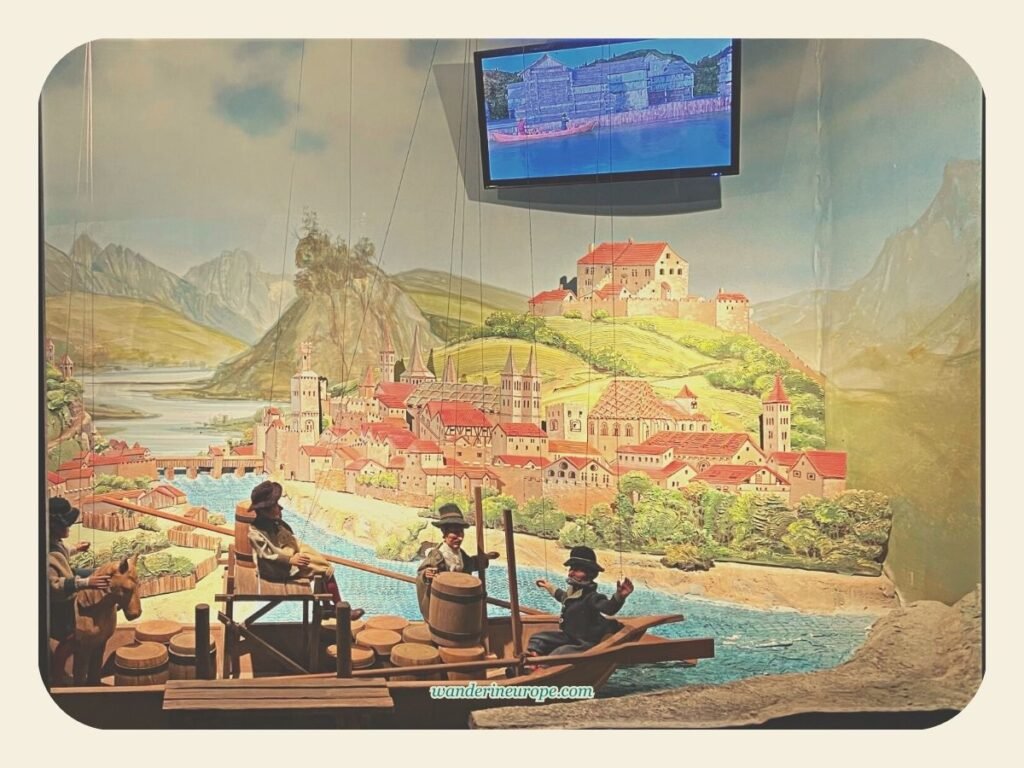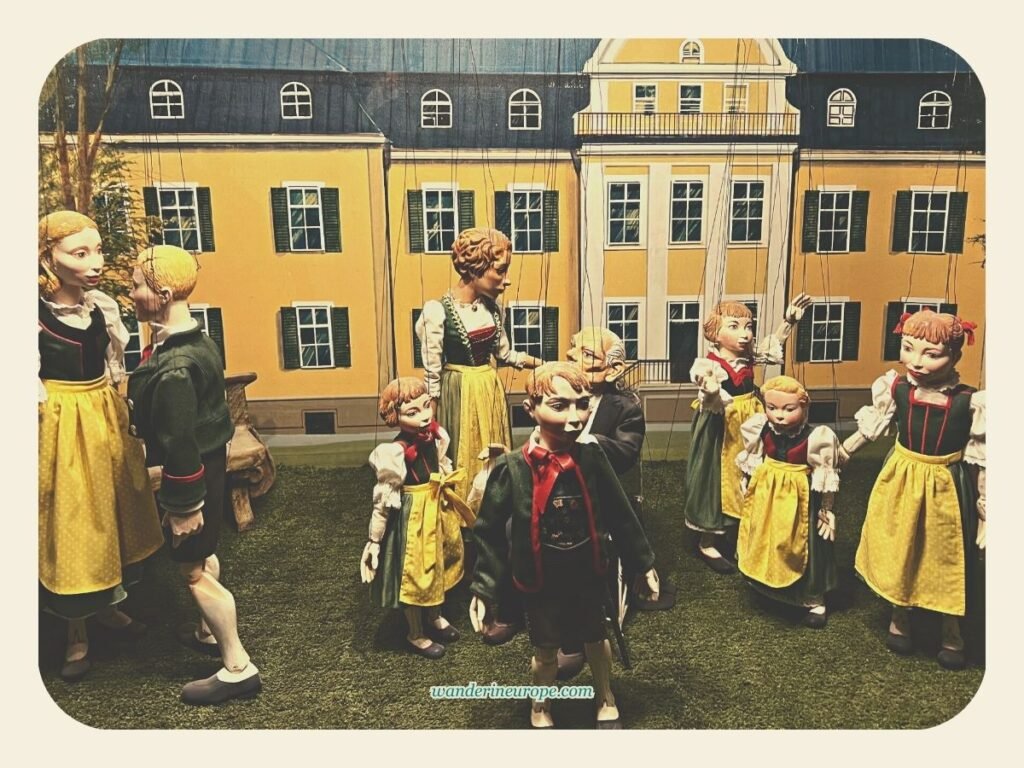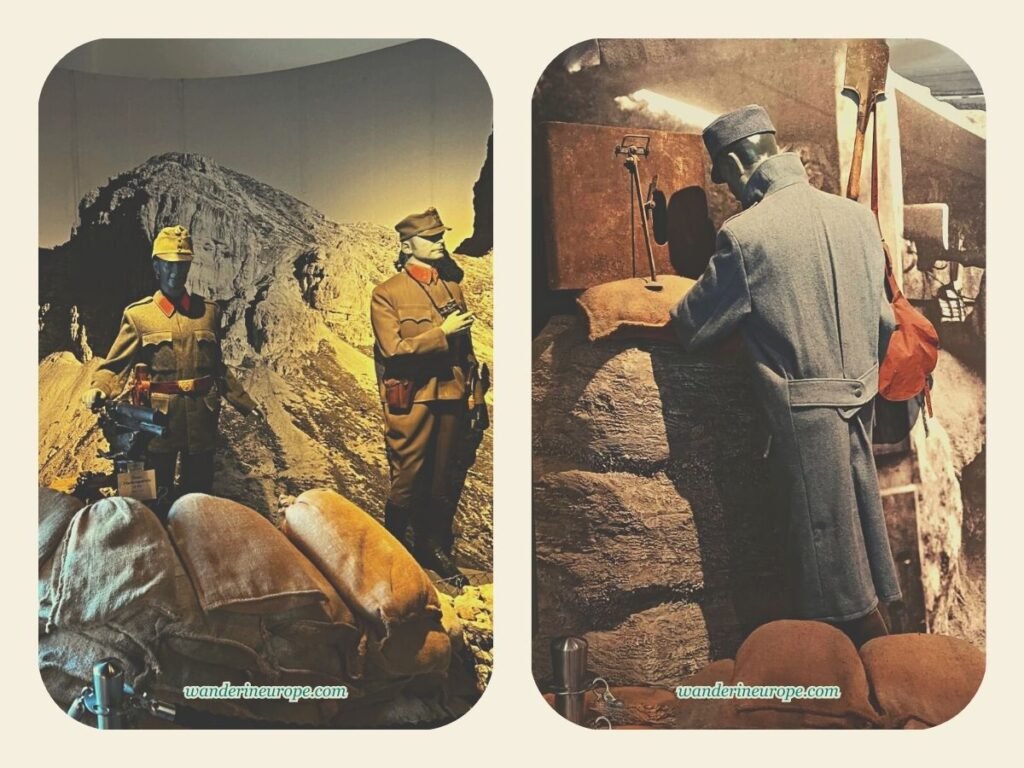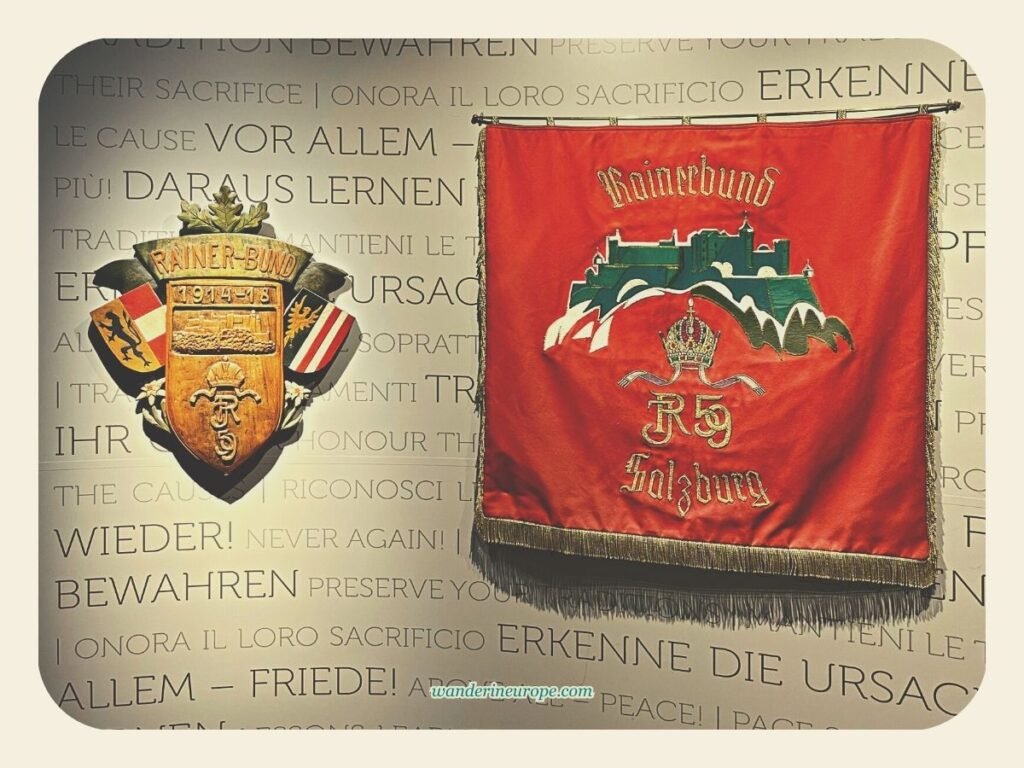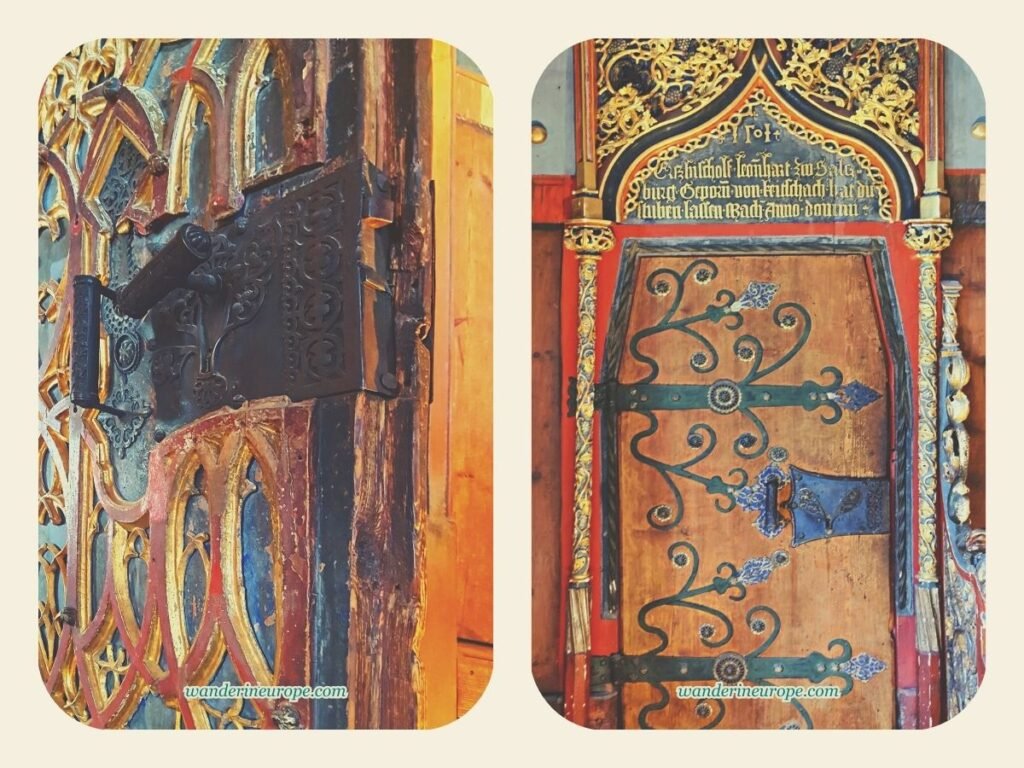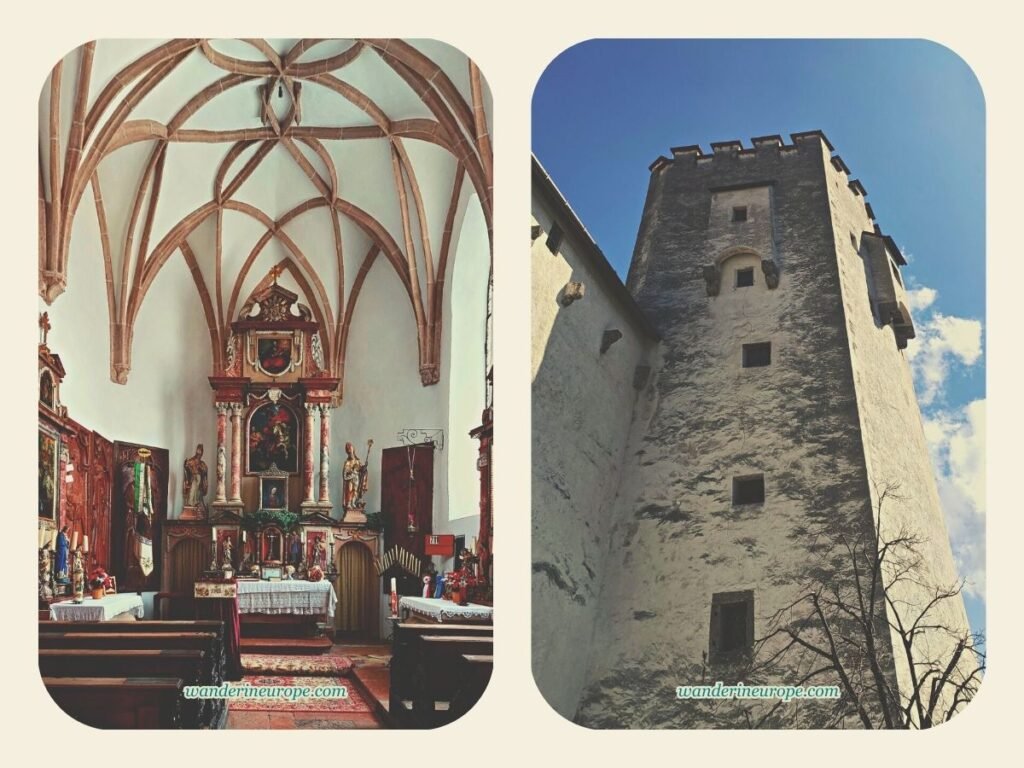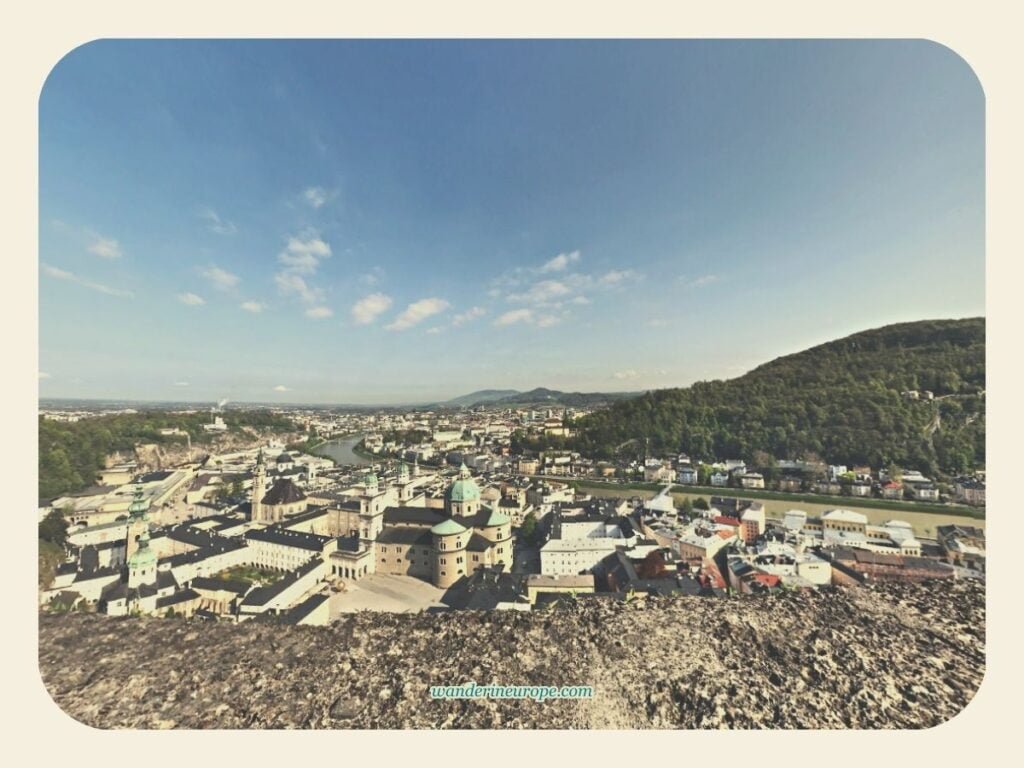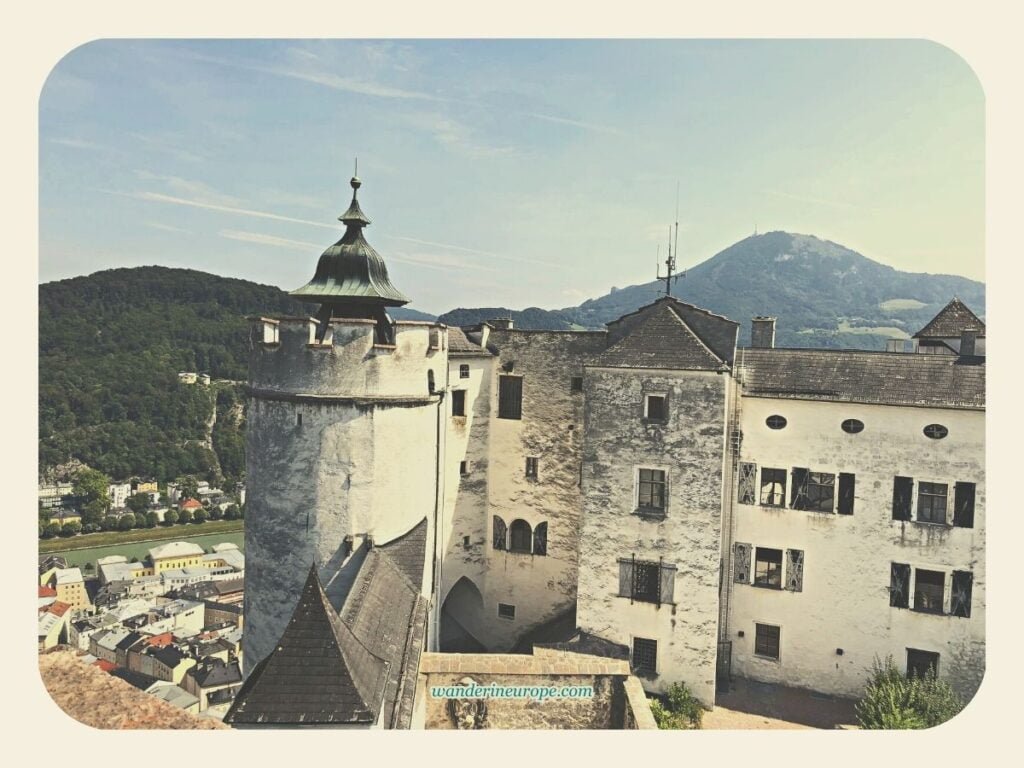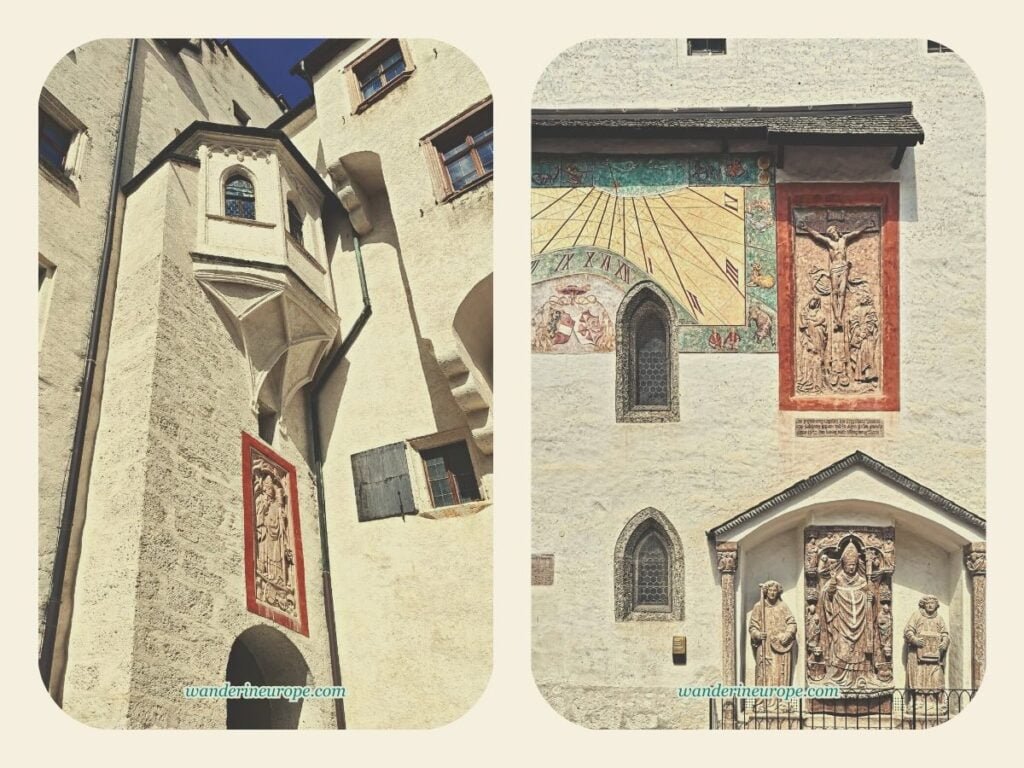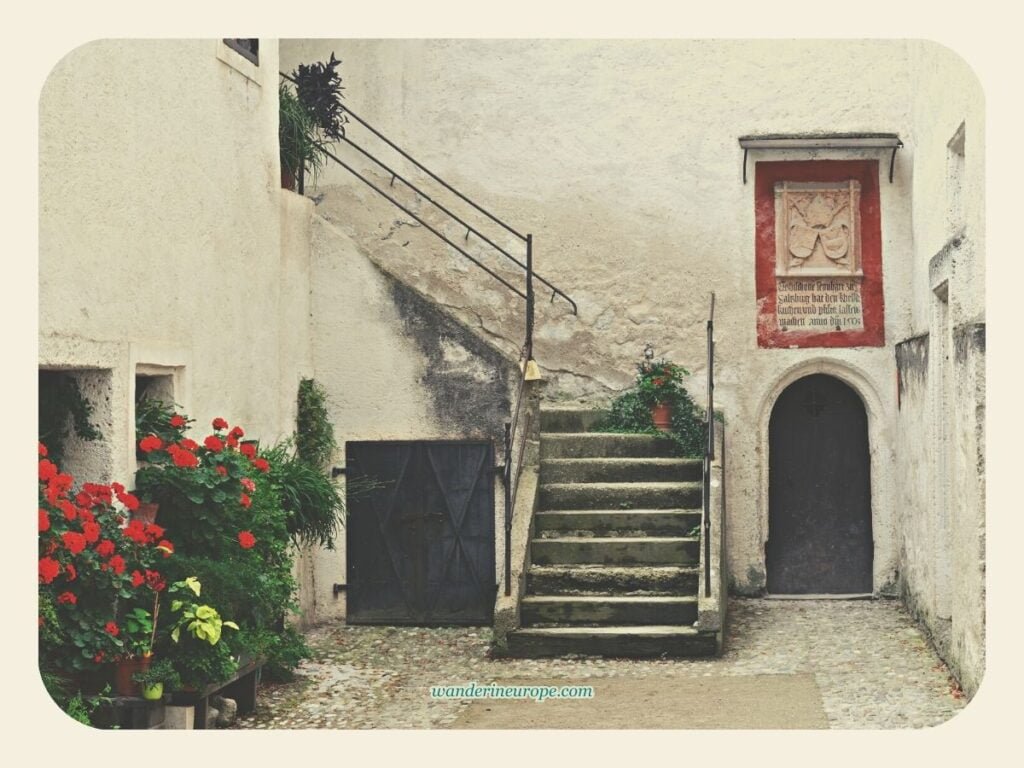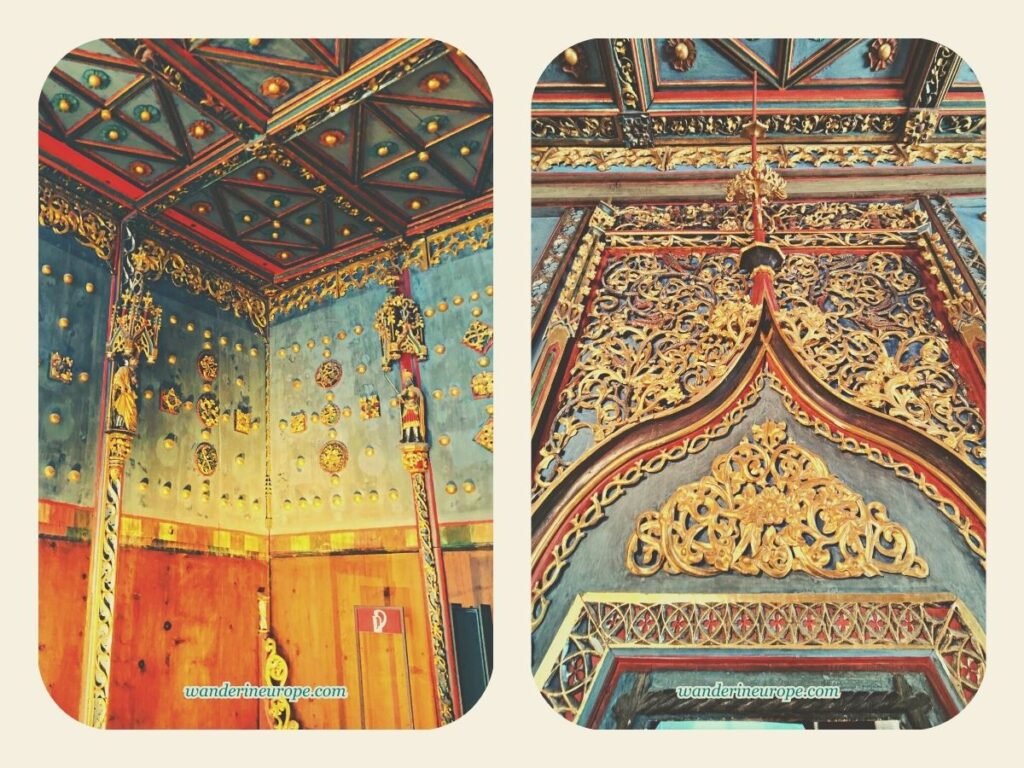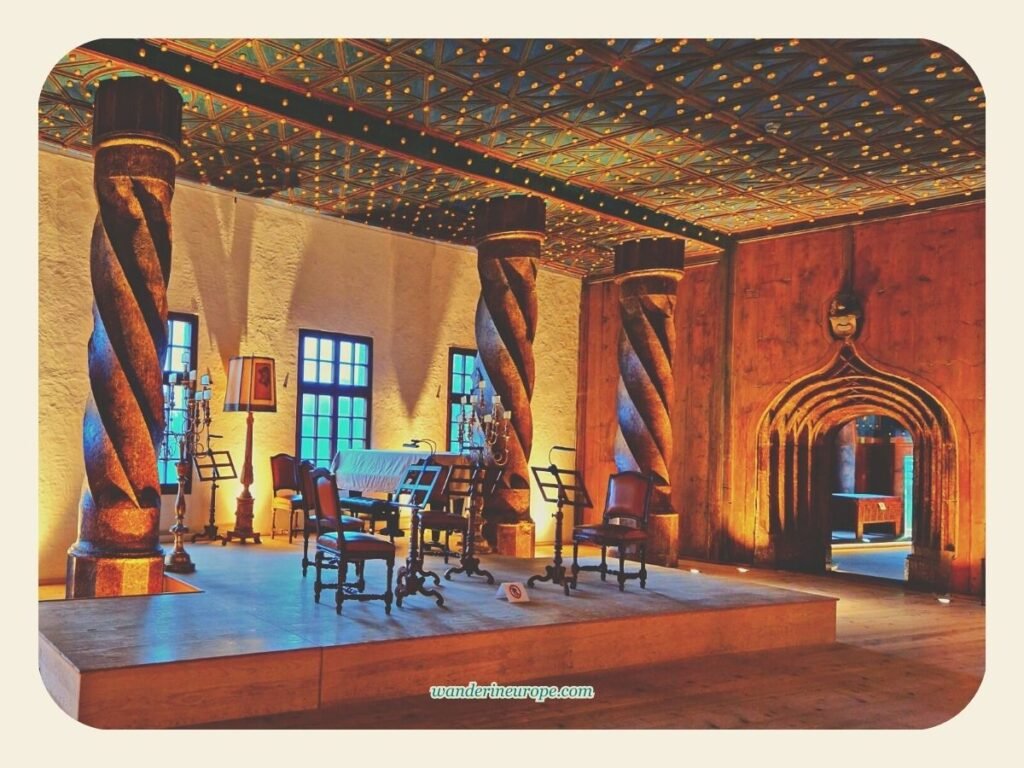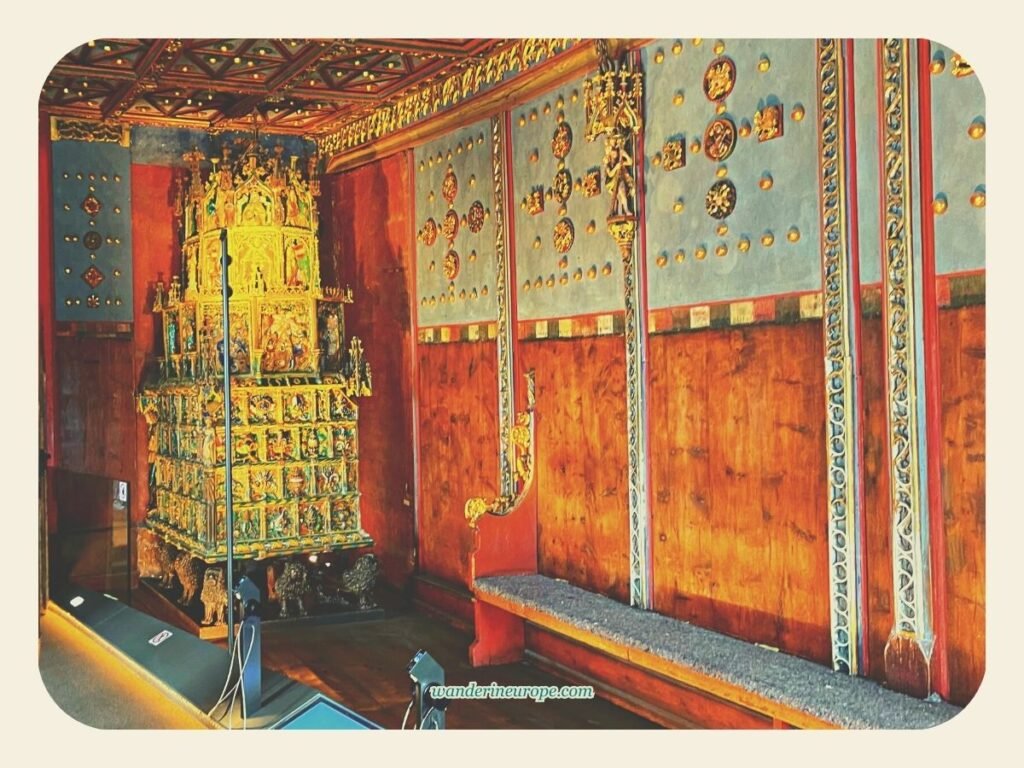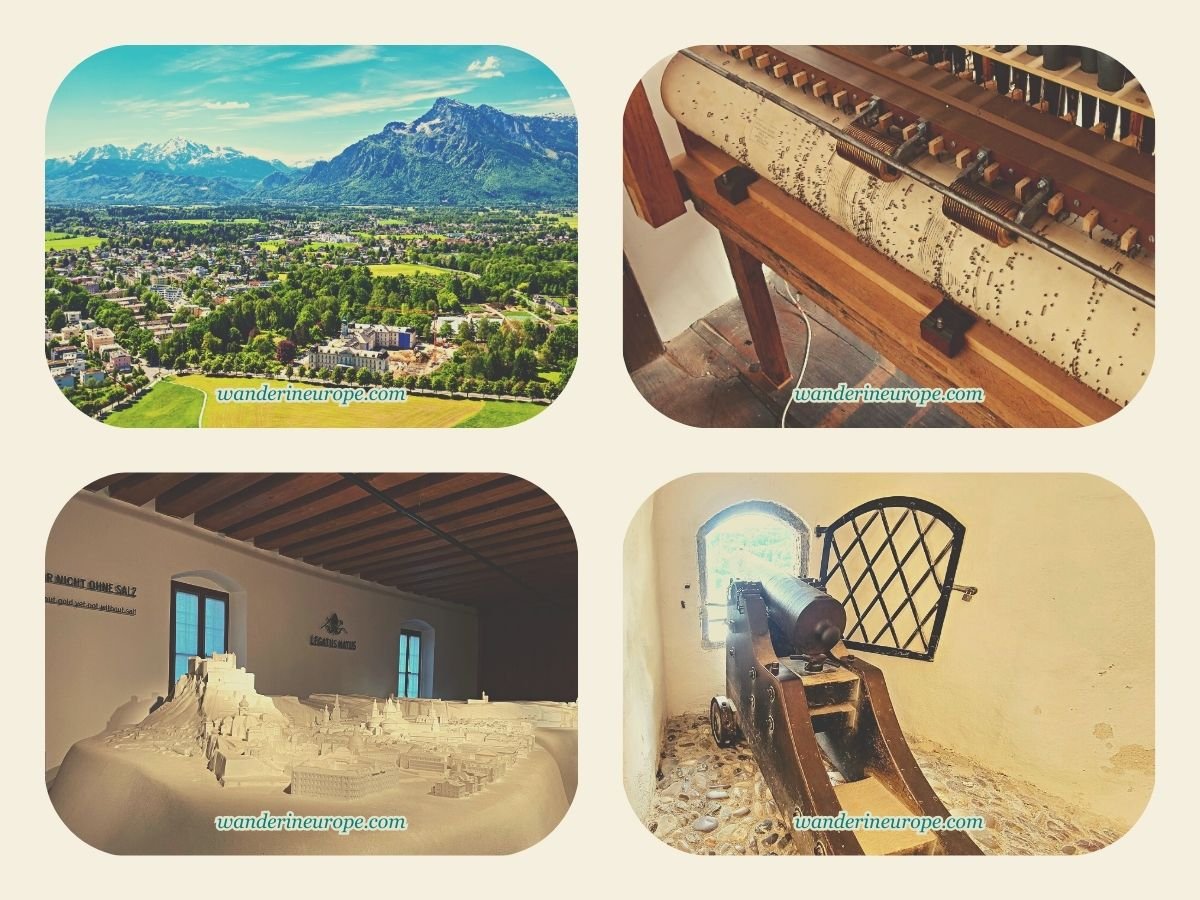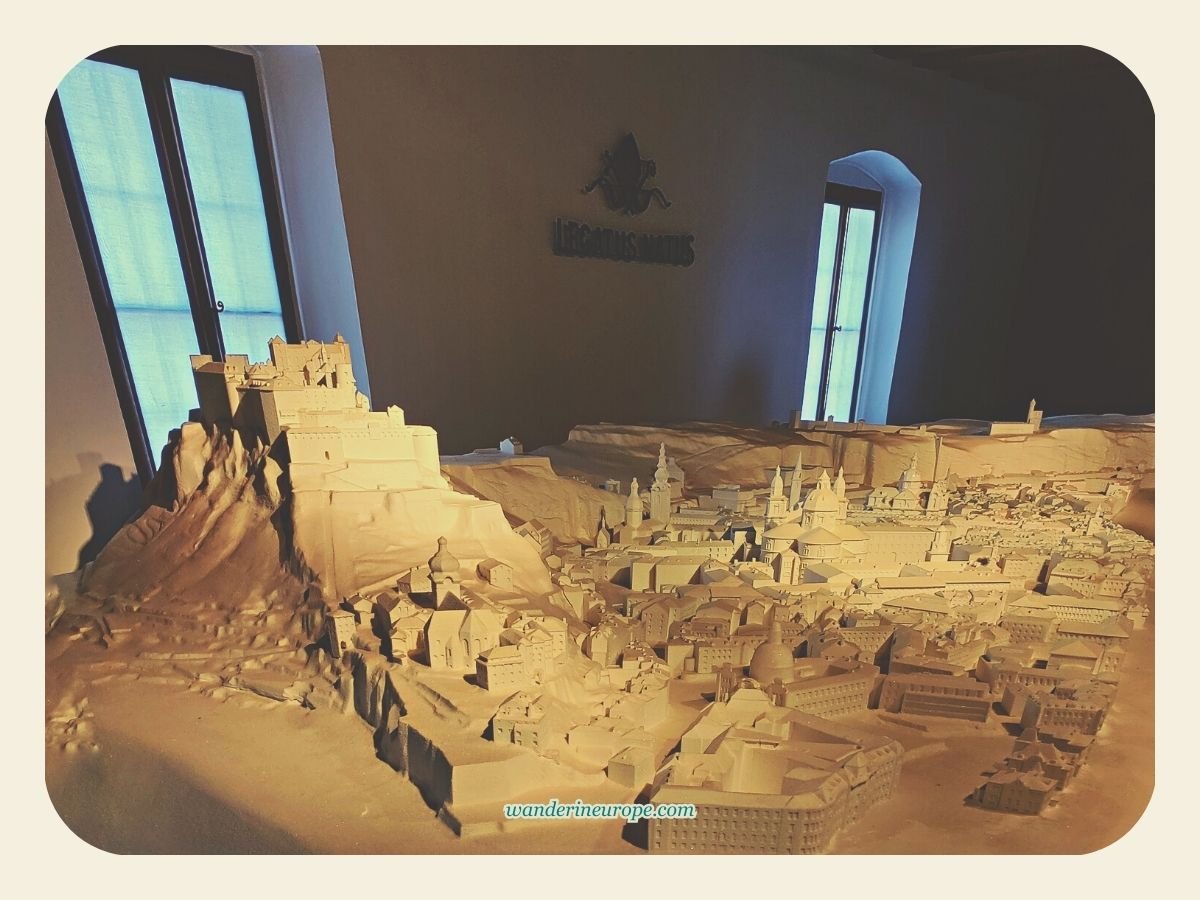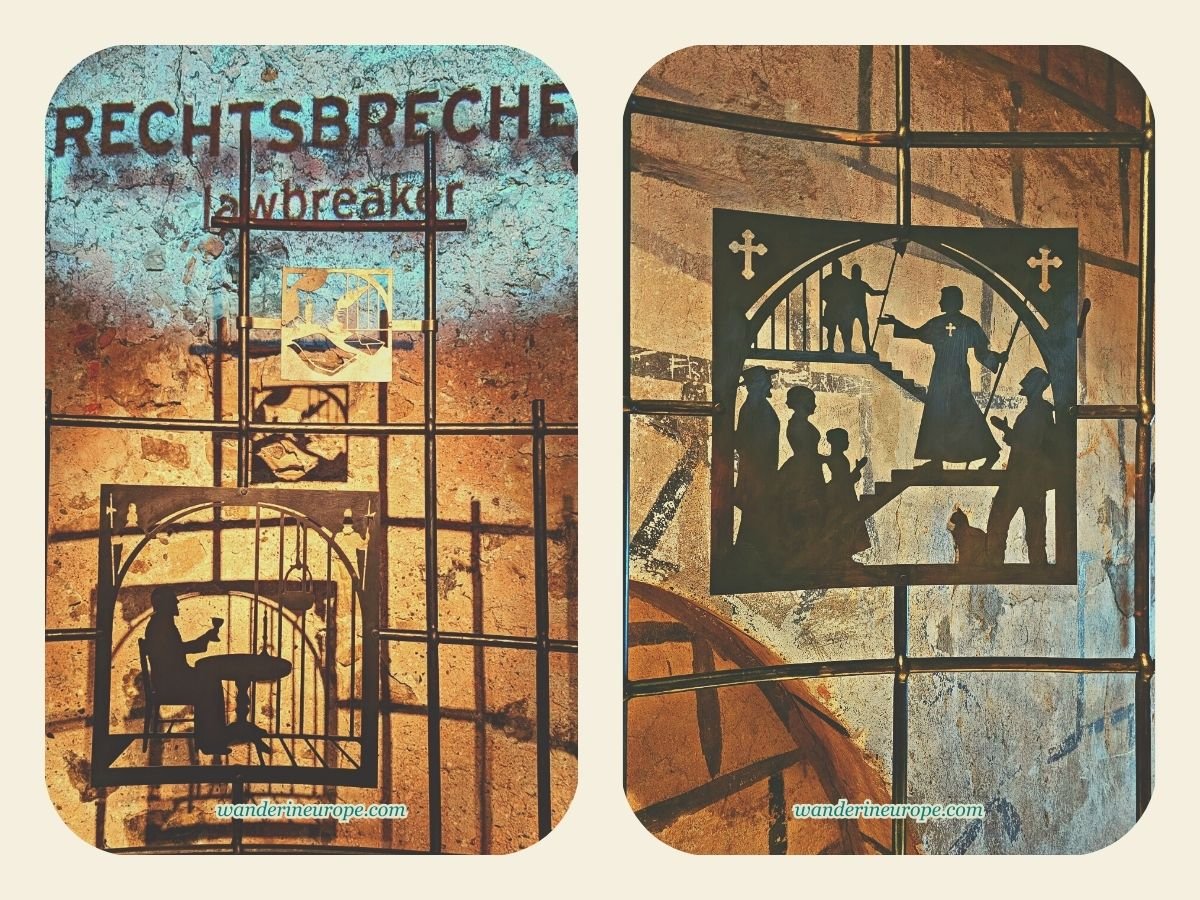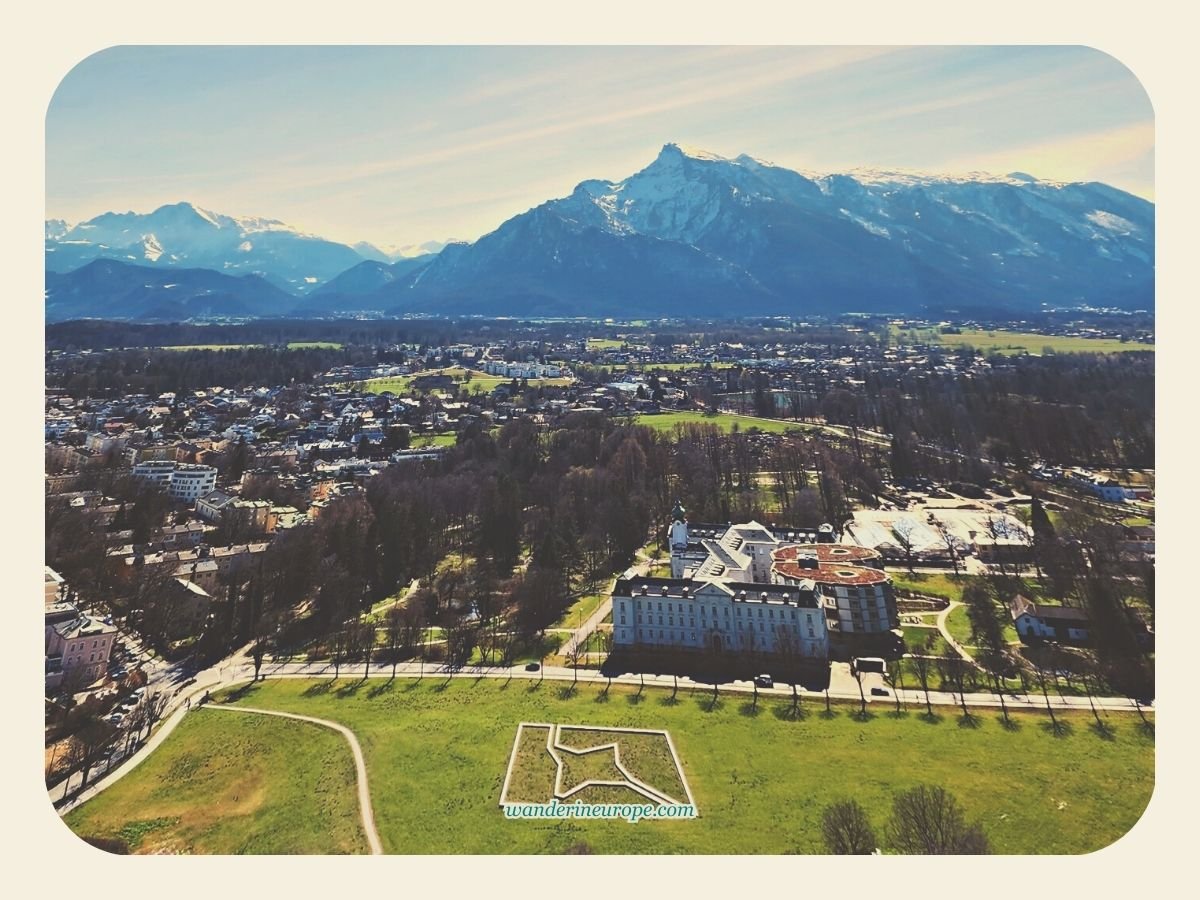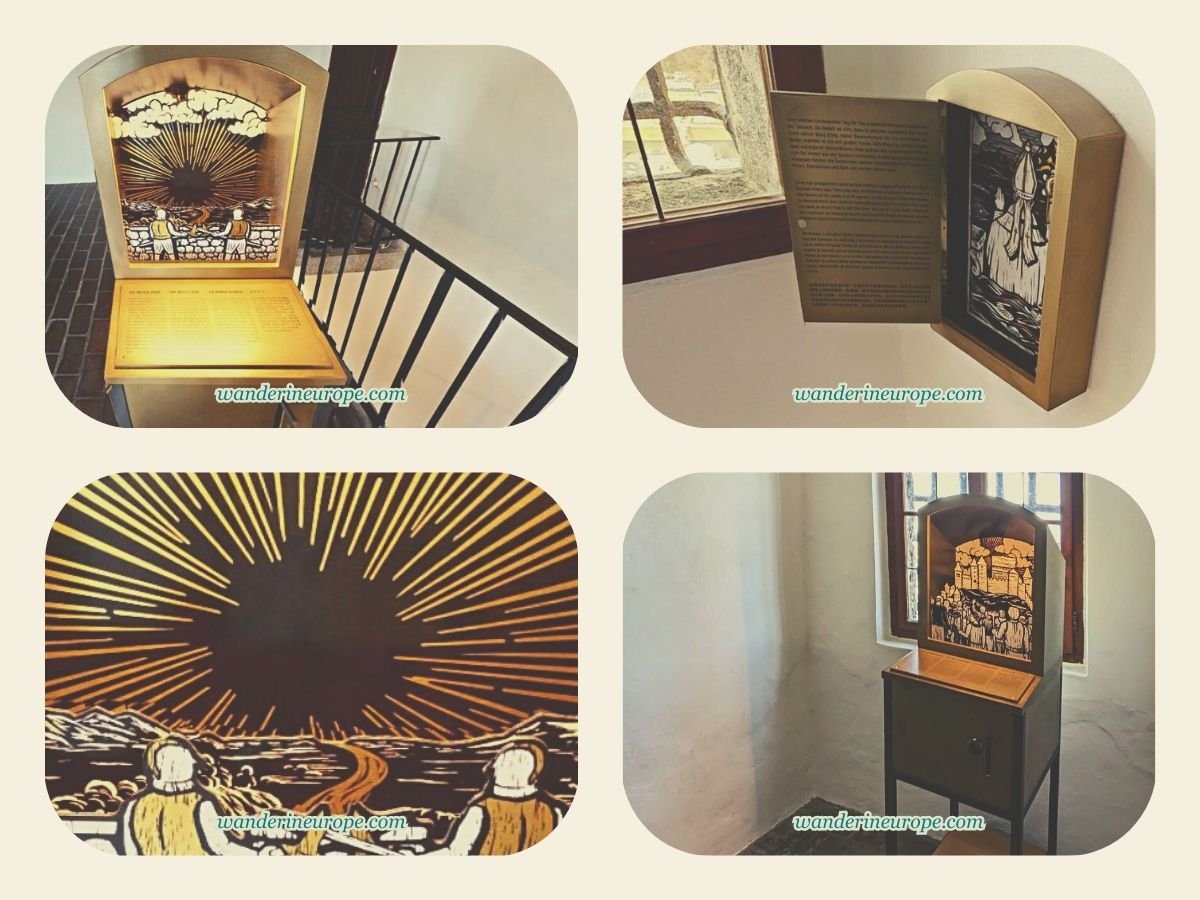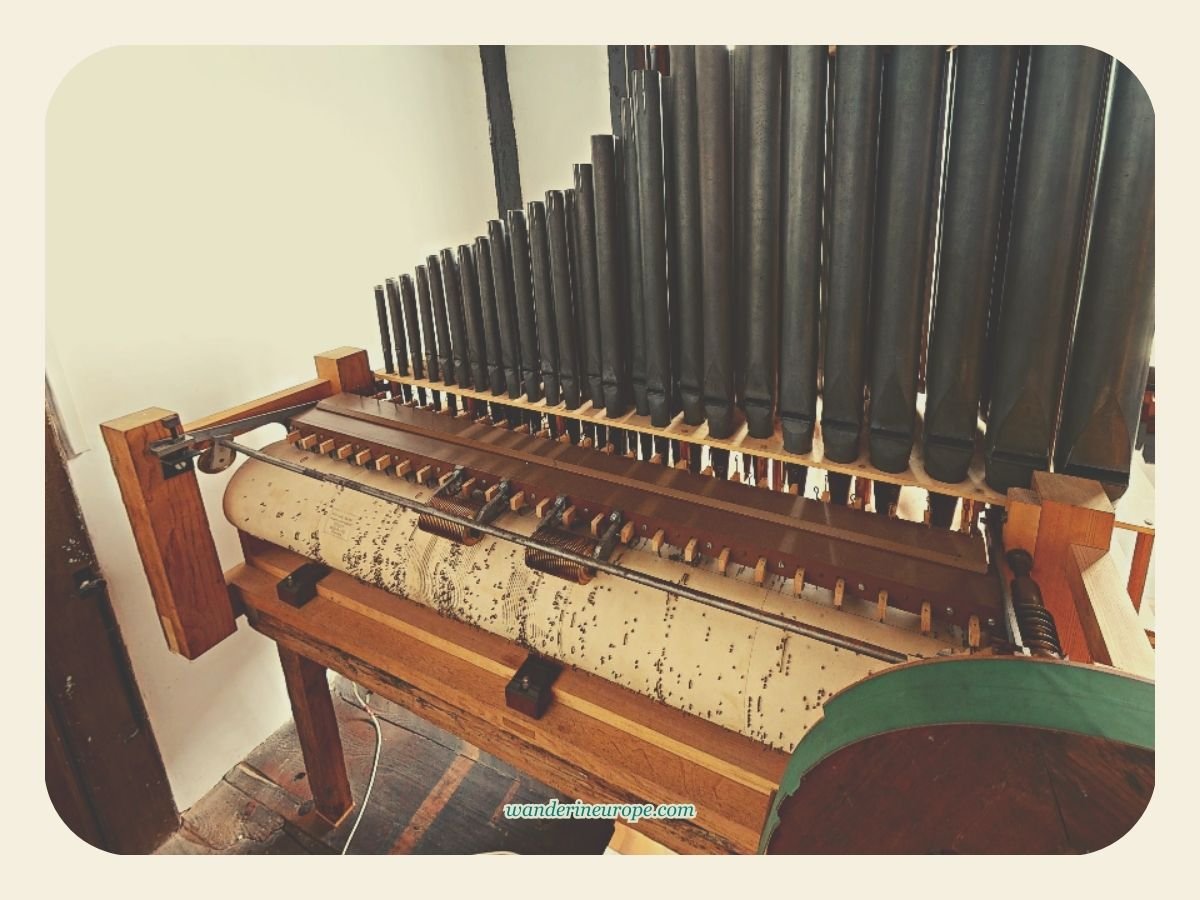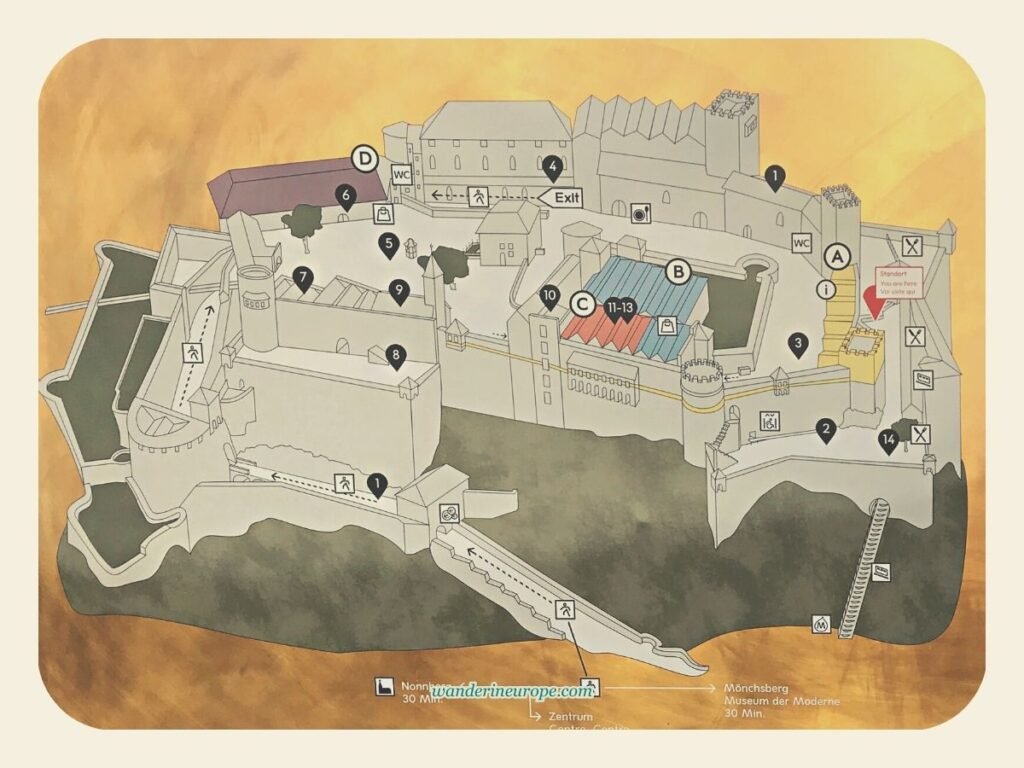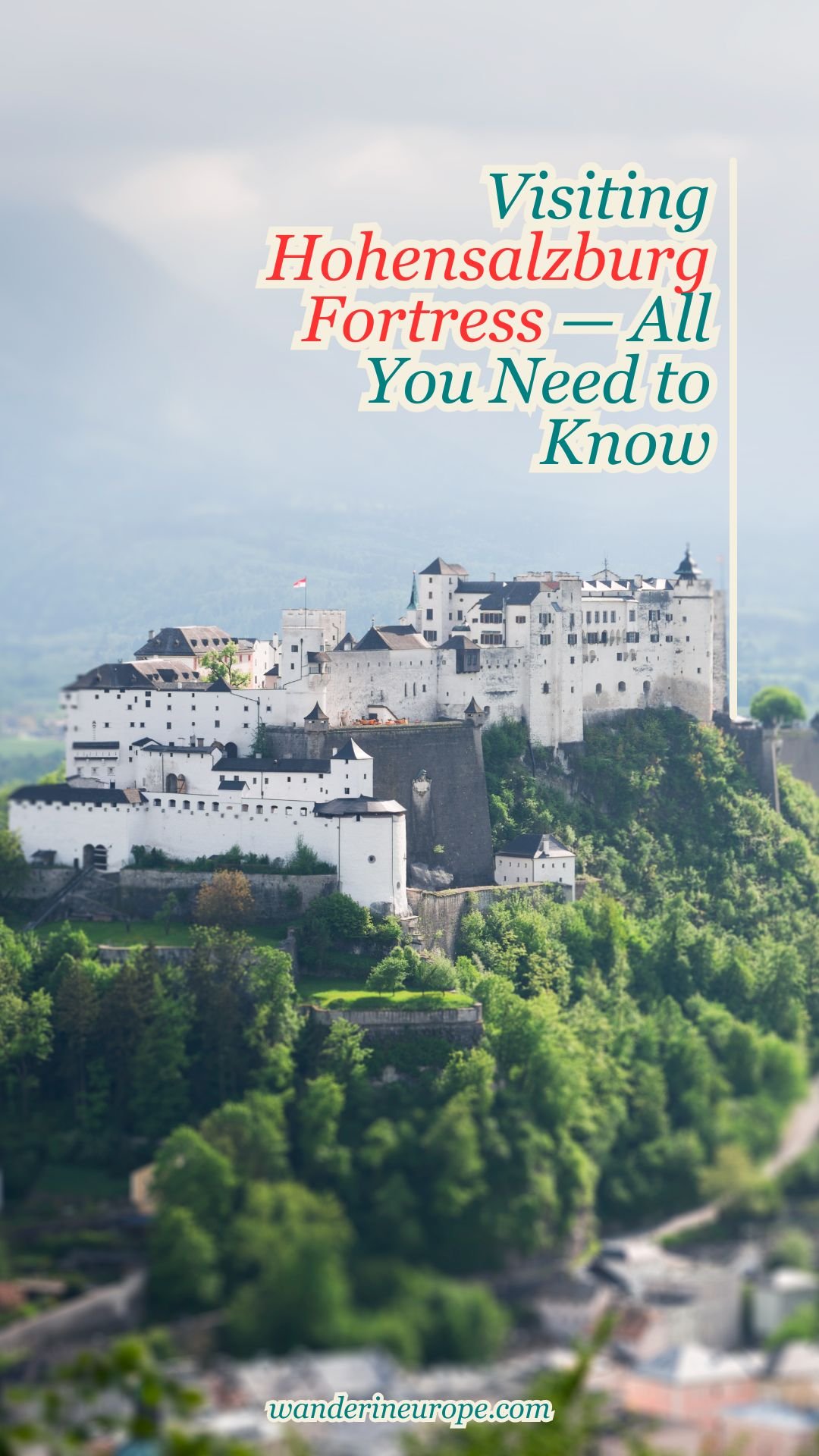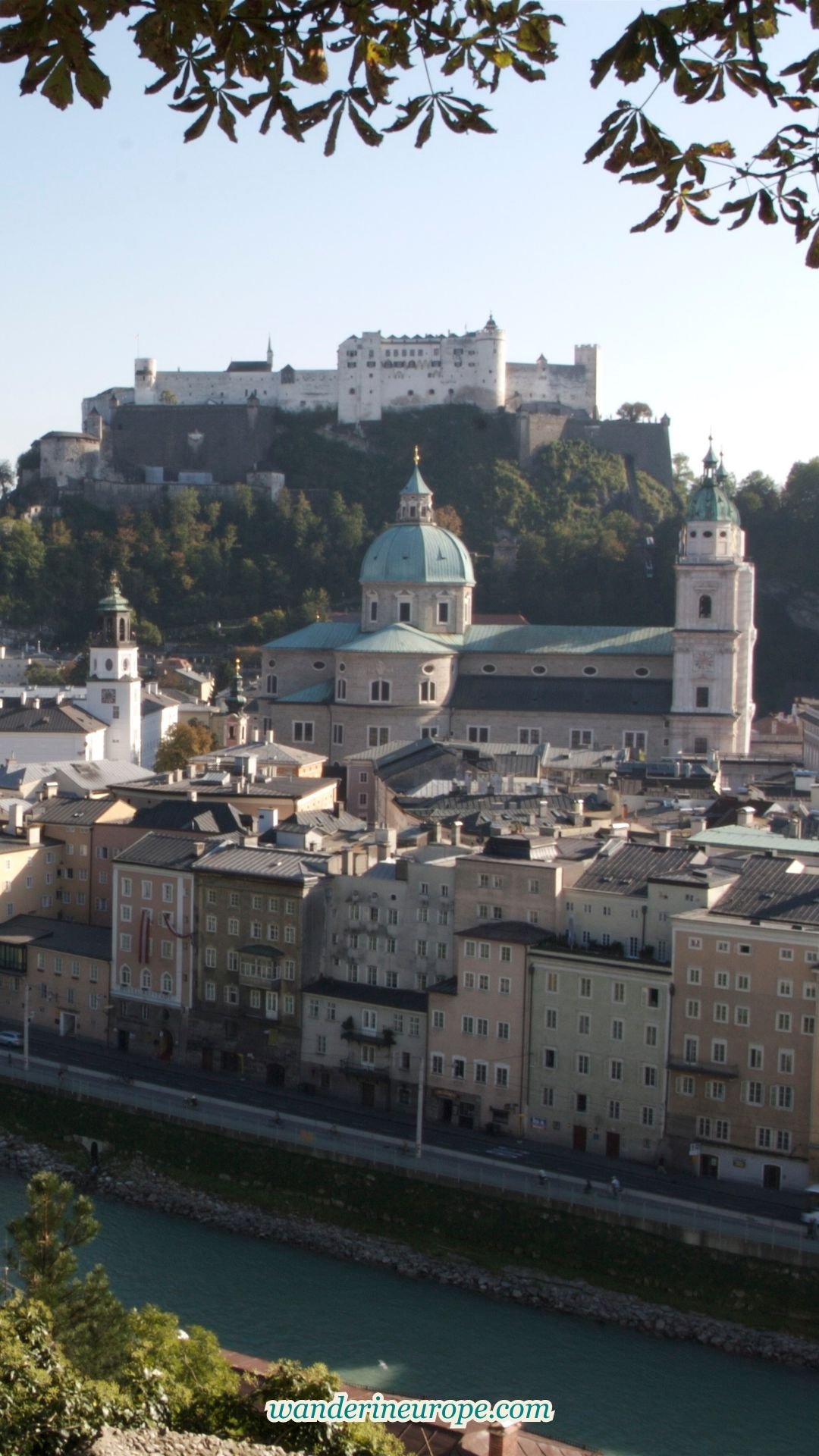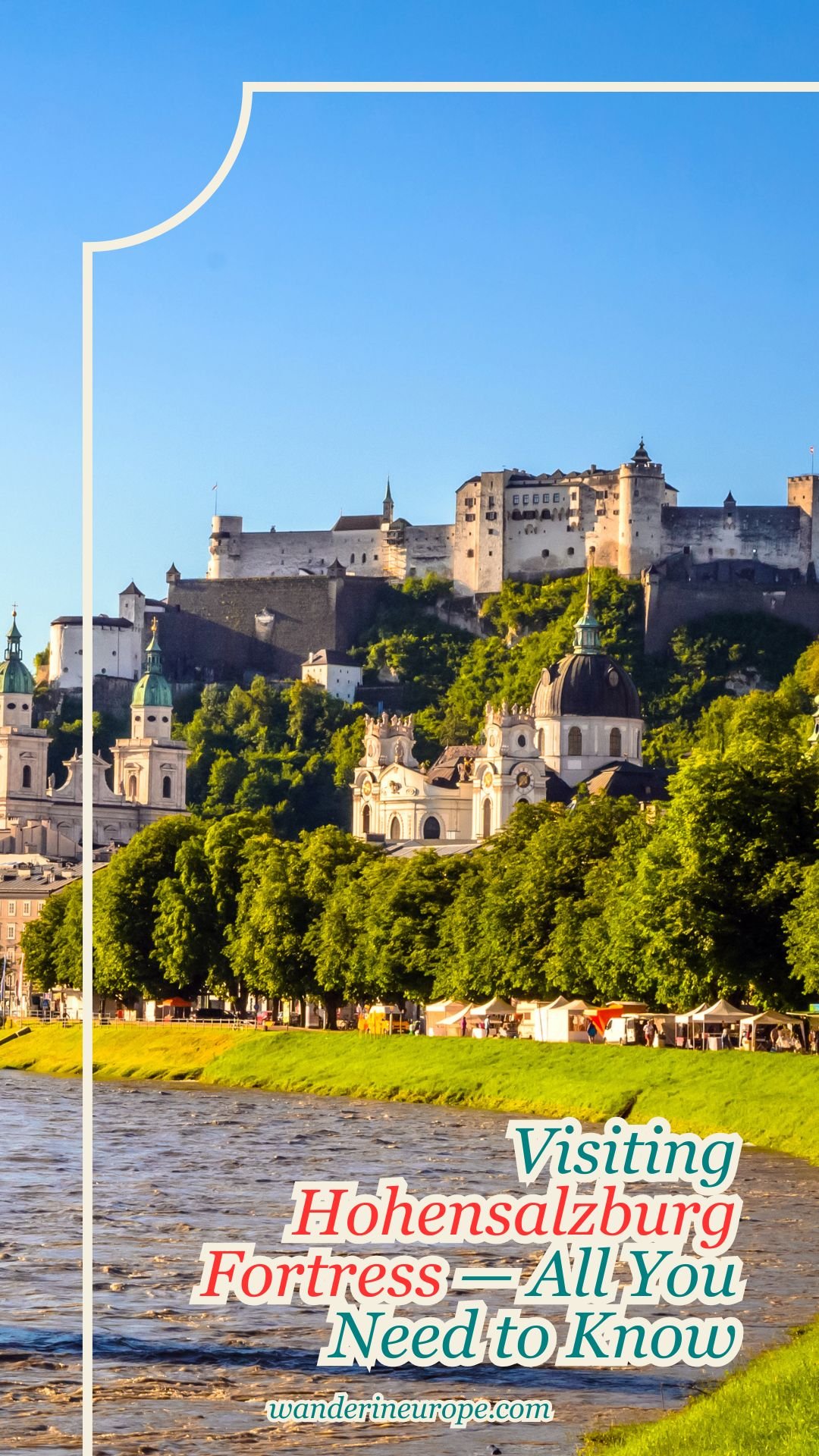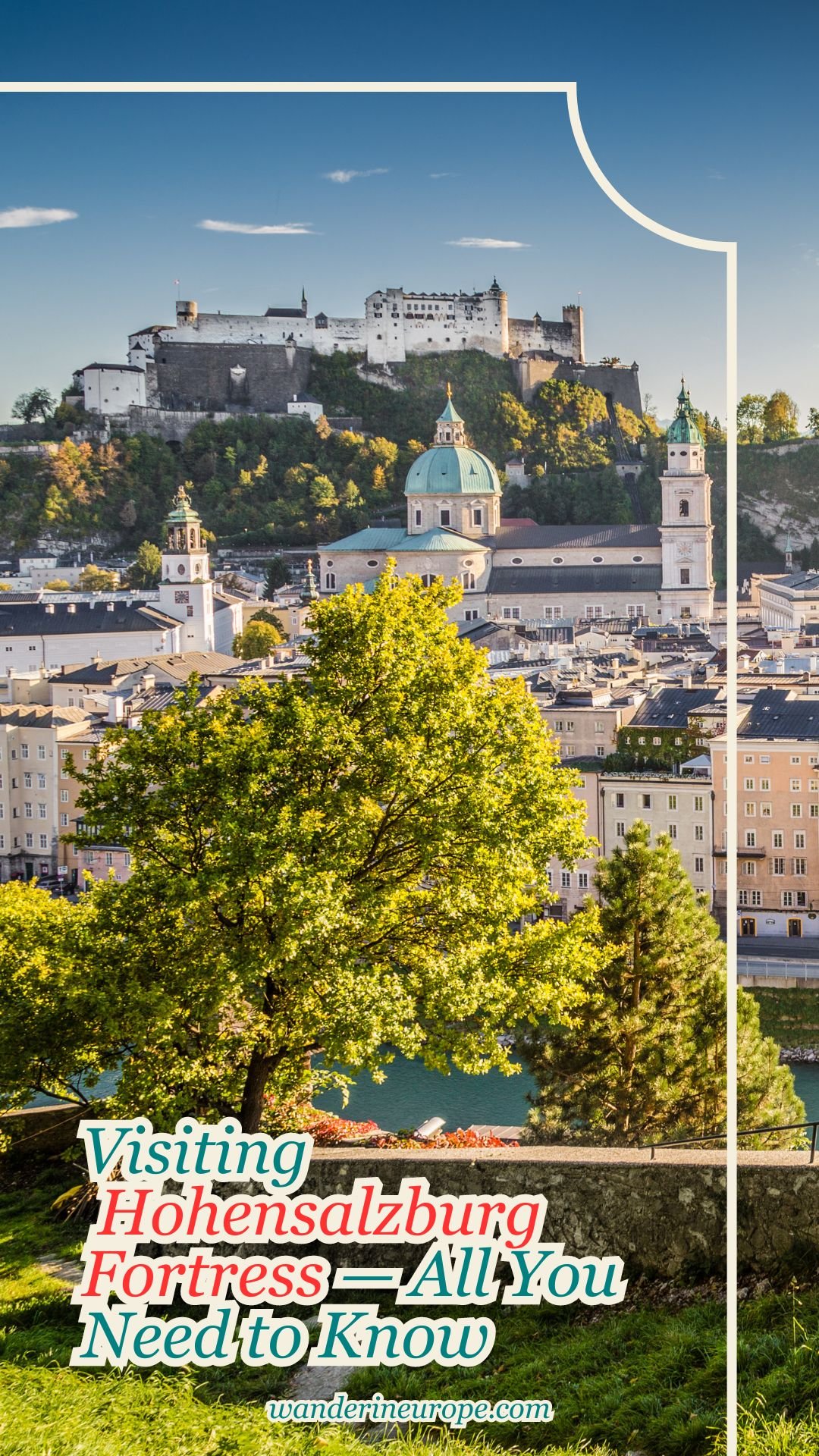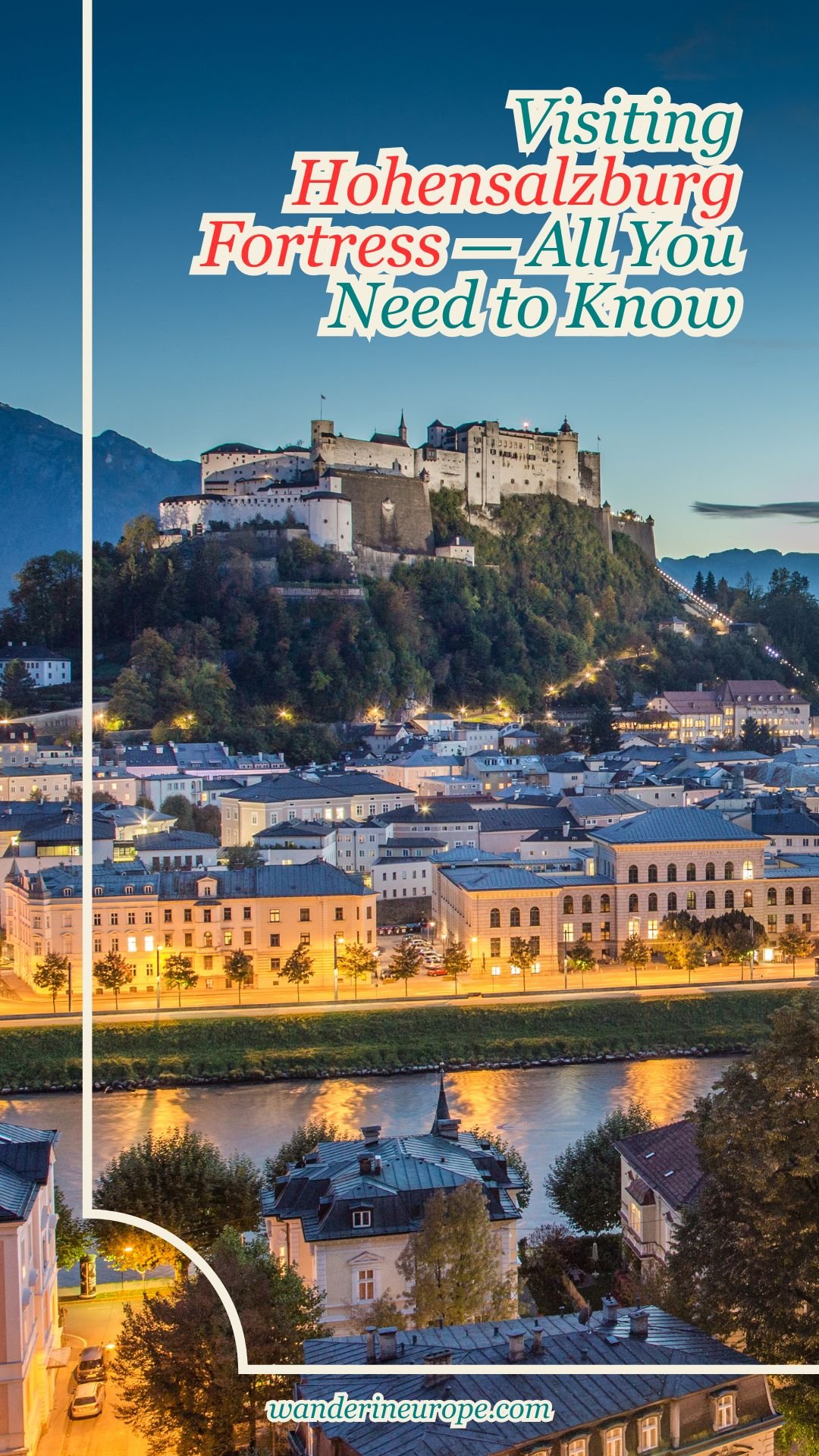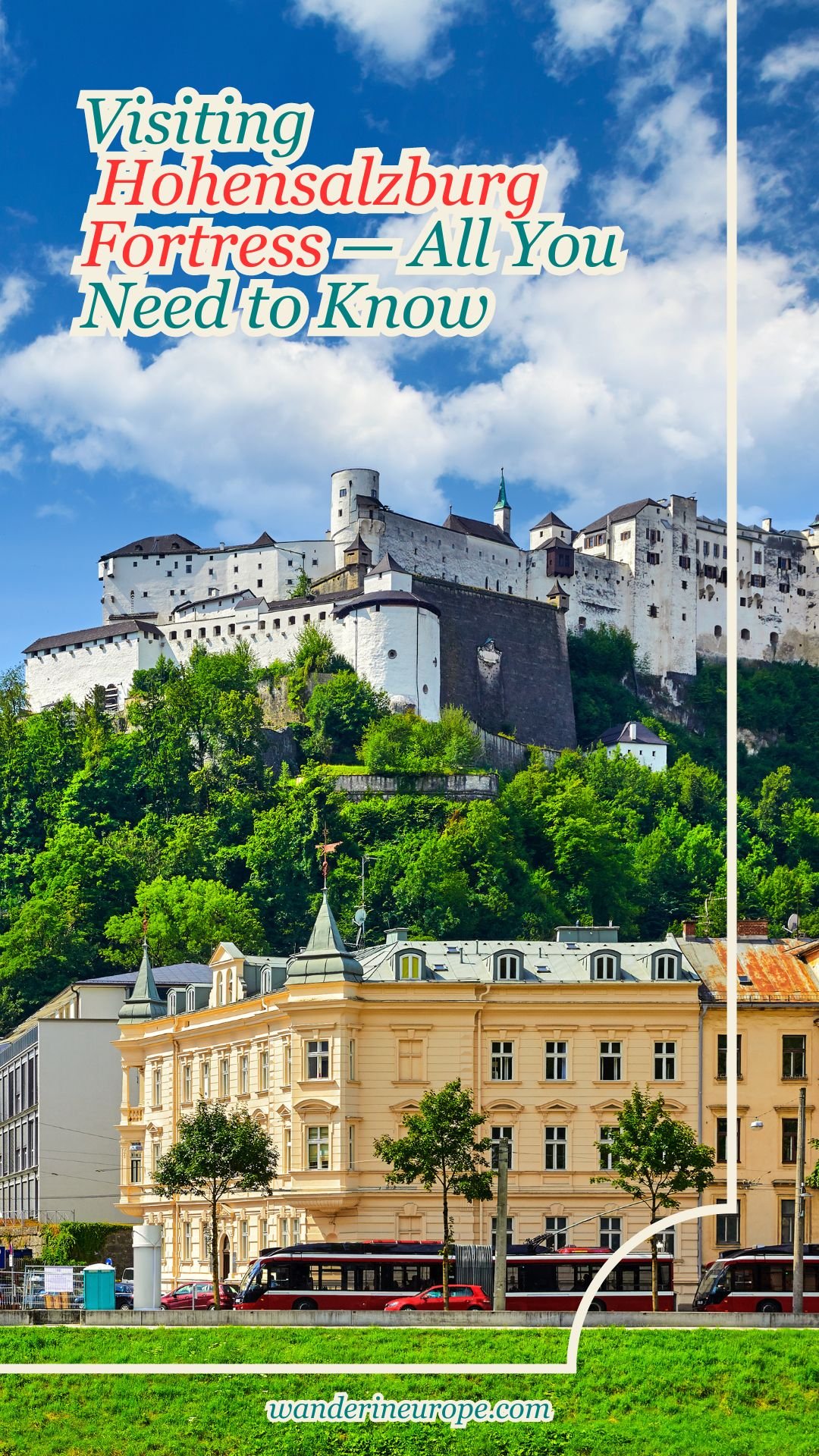Visiting Hohensalzburg Fortress — All You Need to Know
WanderInEurope is reader-supported. Affiliate links and ads help us keep creating useful content for you.
Hohensalzburg Fortress offers plenty to explore, like the Princely Chambers, the dungeon, the Bull of Salzburg, and stunning viewpoints accessible by a funicular railway. You can also check out the bastions, courtyards, and more. If you plan your visit carefully, you might even get the chance to attend a concert in one of the fortress’s most breathtaking rooms. Let me tell you more…

See this: Memorable Salzburg Experiences for Less Than $100 (opens in a new tab)
Top Attractions & Experiences
The most exciting thing about Hohensalzburg Fortress is the awesome experiences and unique discoveries waiting inside!
1. Princely Chambers & Magic Theater

If you’re like me and enjoy marveling at old-world architecture, the Princely Chambers should be at the top of your list when visiting Hohensalzburg Fortress. The Princely Chambers are an architectural highlight of the fortress, boasting a unique secular Gothic-style that is among the best-preserved in Europe.
2. The Armory

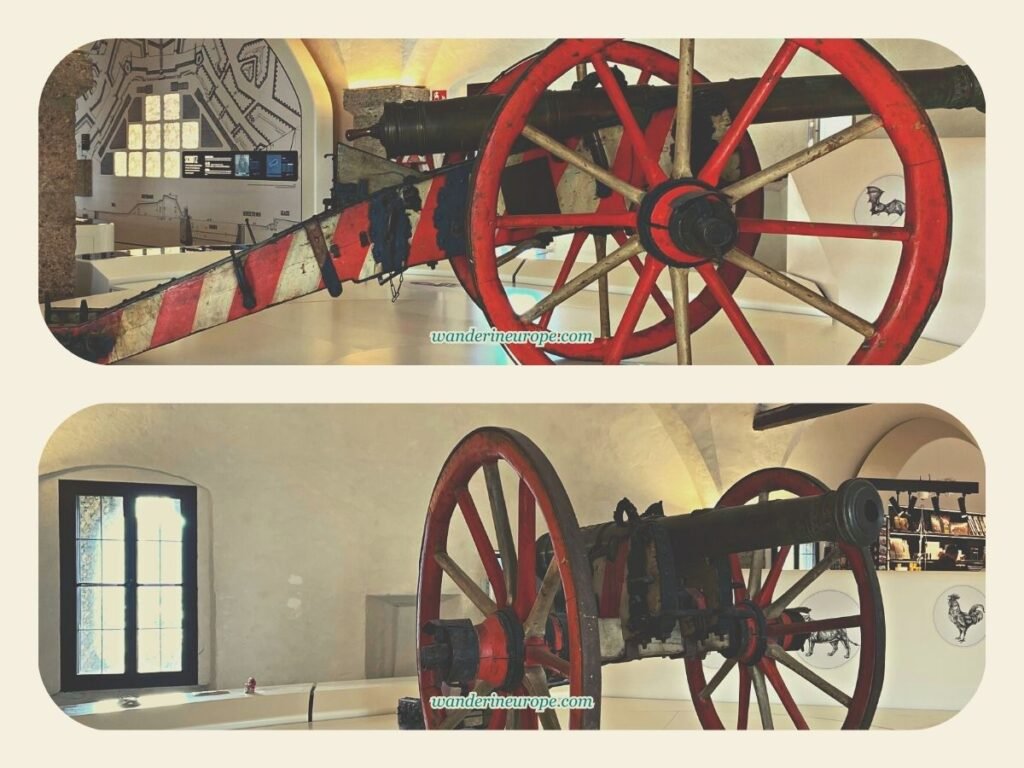
As a tourist attraction from the medieval ages, Hohensalzburg Fortress offers a variety of discoveries, giving insights into what life was like back then. It includes the different armors, guns, canons, weapons, and accessories that were used to defend the fortress from any enemies. You can find them in the armor exhibition which was opened to the public in 2019.
3. The Panorama Tour

Much like the Princely Chambers, the Panorama Tour is a highlight of a visit to Hohensalzburg Fortress. If you join the tour, you’ll gain access to five distinct areas within the fortress. The Panorama Tour starts at the Salt Depot, takes you up to the Dungeon and Viewing Platform, and then leads you down to the Salzburg Bull via the Battlement Walkway.
4. The Fortress Museum

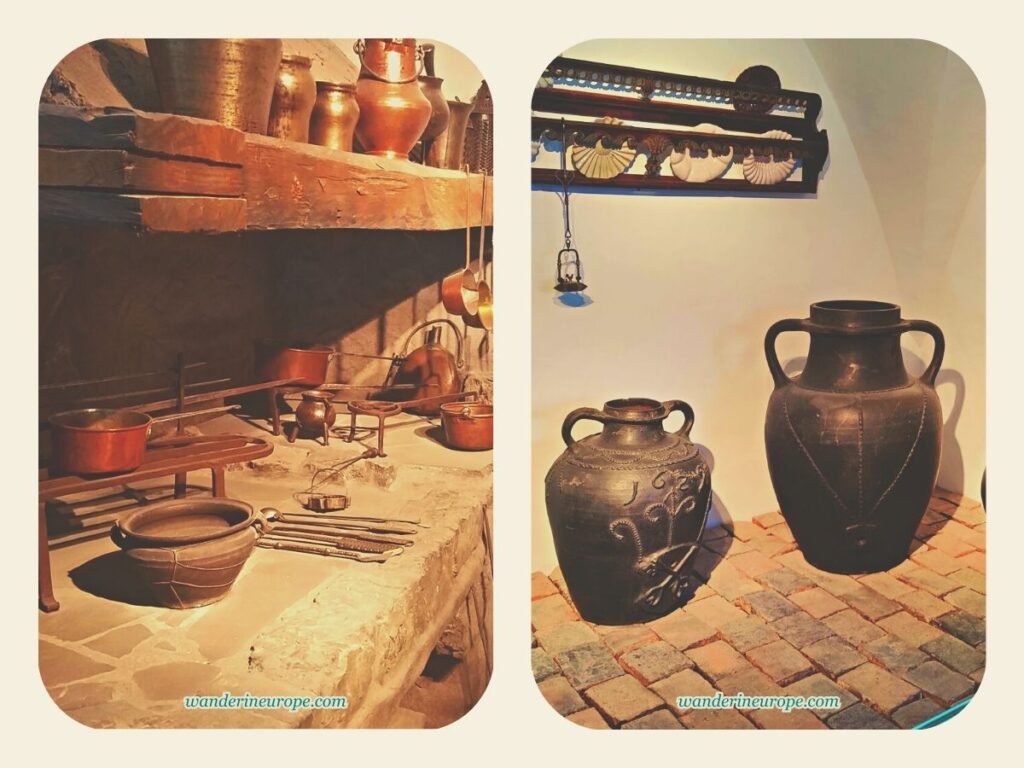
Ready for a blast from the past? Head on over to the Fortress Museum, located in the “Hoher Stock” wing of the Hohensalzburg Fortress, and explore the history of Salzburg and the function of the fortress. With twelve rooms, each dedicated to a different topic, you’ll have plenty to discover: from the building history of the fortress to the Archbishops of Salzburg, from Salzburg in the Middle Ages to nutrition and cooking in the Middle Ages!
5. Rainer Regiment Museum

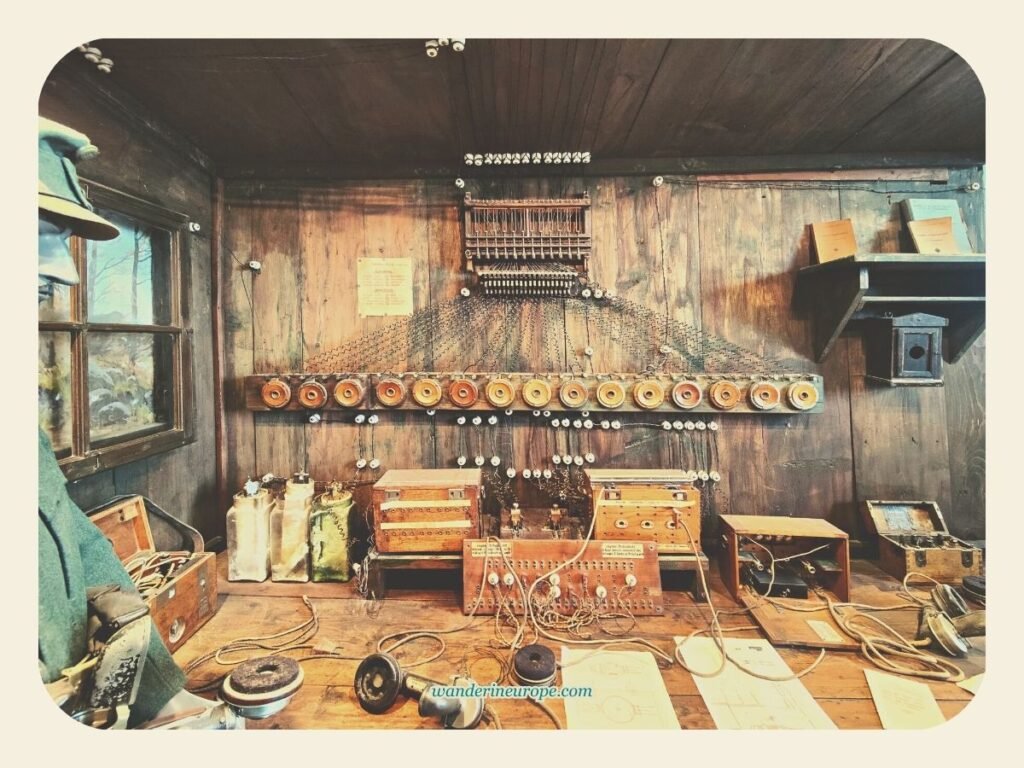
Hohensalzburg Fortress is mostly about the Prince Archbishops. However, it doesn’t mean that you can’t discover something from recent history during your visit. Did you know that this place has housed the Rainer Regiment Museum since 1924? (to honor the memory of the former Salzburg house regiment, the Imperial and Royal Infantry Regiment ‘Archduke Rainer’ No. 59.)
6. Marionette Museum


One of the fun and surprising offerings of the Hohensalzburg Fortress is the Marionette Museum in the Prince’s Cellars of the fortress. The museum displays many historical marionettes from the world-famous Salzburg Marionette Theater and offers many highlights for you to enjoy.
7. Join the Different Castle Events

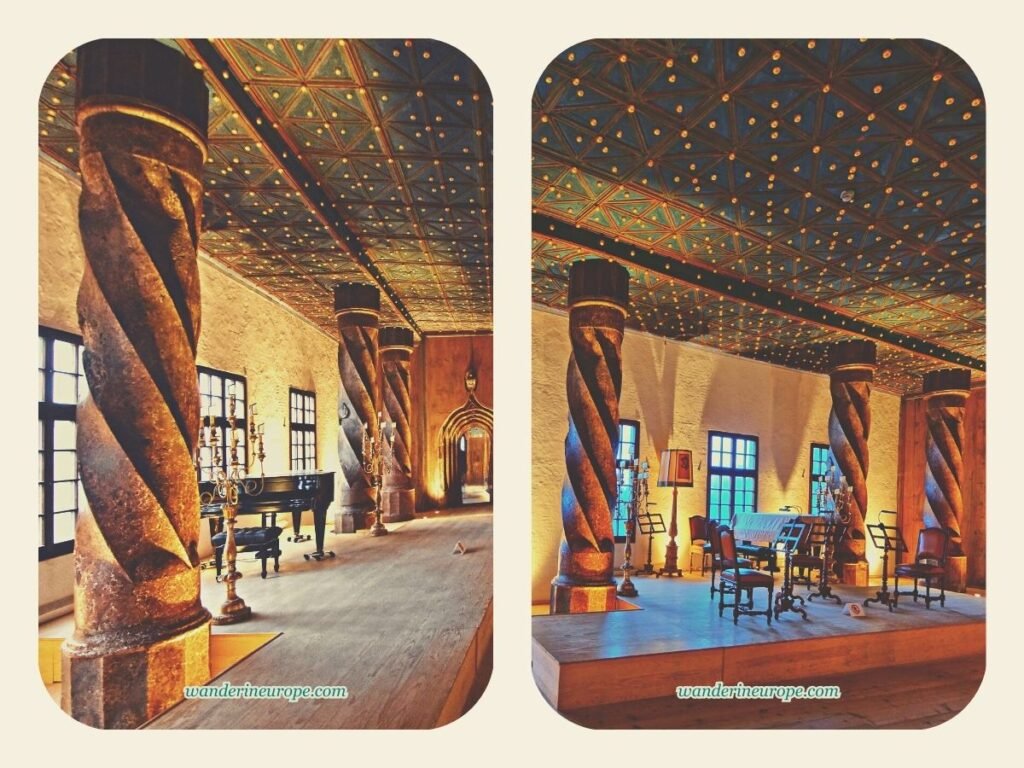
As you may have discovered a while ago, you can experience classical music in a unique and historic setting by attending a Salzburg Fortress Concert. Held in the magnificent chambers of Fortress Hohensalzburg, these concerts have been delighting audiences for over 40 years.
Visiting Information
You’re visiting Hohensalzburg Fortress?! Well, I’m excited for you!

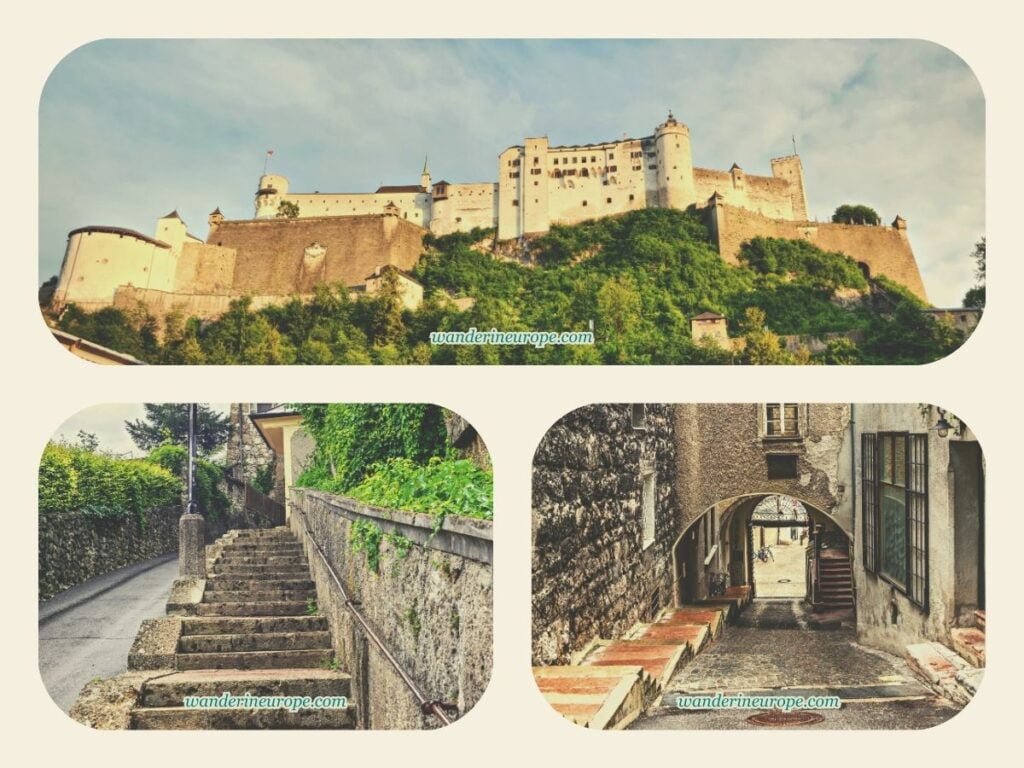

From great hotel deals to skip-the-line tickets and affordable eSim to cheap rentals, click here for the best hotel deals and more travel discounts.
Tickets
There are four types of tickets available for Hohensalzburg Fortress. Your overall experience at the fortress will depend on the type of ticket you choose. Let me guide you on what to choose.

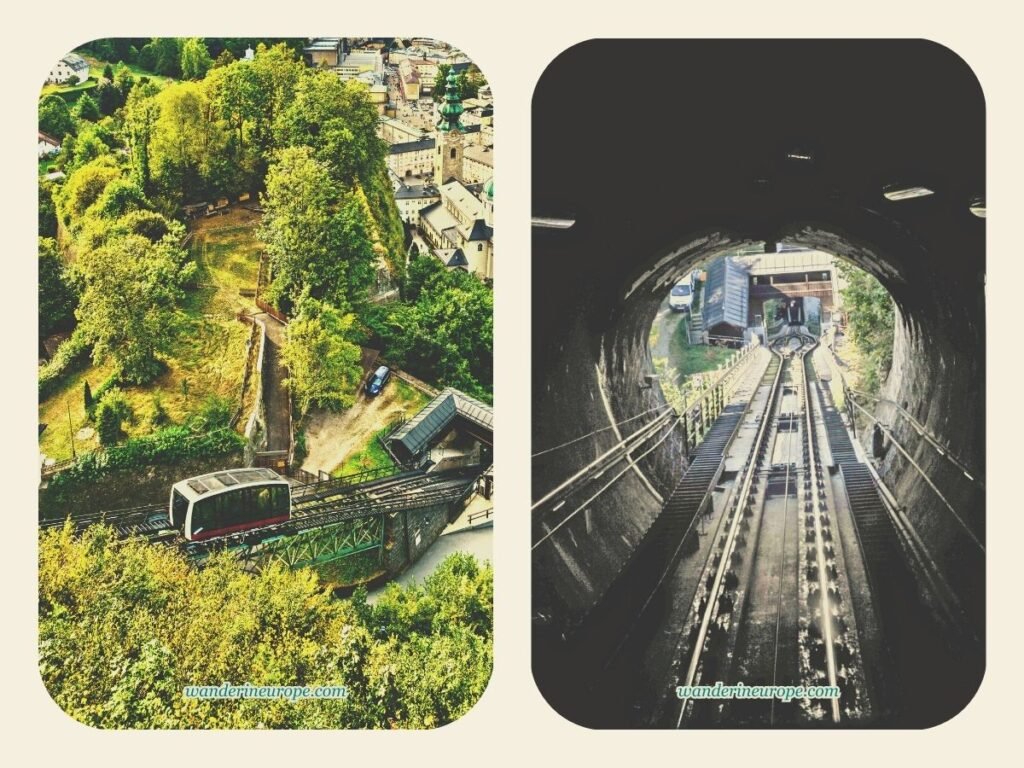

Basically:
- If you have the Basic Ticket with Fortress Railway or the All-Inclusive Ticket with Fortress Railway, you can take advantage of the roundtrip funicular ride included in the ticket package to reach Hohensalzburg Fortress quickly. The funicular runs every 10 minutes and takes about a minute to reach the top.
- The Basic Pathway Ticket and the All-Inclusive Pathway Ticket do not include the funicular ride up the hill to the Fortress. If you purchase either of these tickets, you need to hike up the hill to reach Hohensalzburg Fortress. Depending on how fast you walk, hiking can take 15 to 20 minutes.
While the path to Hohensalzburg Fortress is scenic, I still suggest buying tickets that include a roundtrip funicular ride. The 4-dollar upgrade is worth the convenience and time saved from hiking uphill.
You can check the current price of Hohensalzburg Fortress Tickets (with funicular roundtrip ride) here.
If you’re wondering what’s the difference between basic and all-inclusive tickets: basic tickets cover access to the Fortress Museum, Rainer Regiment Museum, Marionette Museum, Armoury, Panorama Tour, and courtyards, bastions, and chapel. Princely Chambers and Magic Theater are excluded.
On the other hand, you are allowed to explore all parts of the fortress if you have the all-inclusive tickets.
Get your Hohensalzburg Fortress Tickets here.
While you can enter Hohensalzburg Fortress with regular tickets, there are more ways you can spend time in the fortress and have a memorable experience. Below, I’ll let you know about more options.
For a convenient, unique, or more enriching visit, check out these experiences and services:

Explore Salzburg
A trip to Salzburg isn’t complete without visiting Hohensalzburg Fortress! But there’s plenty more worth seeing. From historic landmarks to hidden gems, you’re in for an unforgettable experience. Click on any of the topics below to start exploring!
Sources
If you’re interested in learning more about the fortress, its history, and visiting information, please refer to the resources listed below. These resources offer a wealth of information that will help you make the most of your visit to Hohensalzburg Fortress.
- Salzburg Museum official website (Fortress Museum)
- Rainer Regiment Museum official website
- Marionette Museum official website
- Events at Hohensalzburg Castle
- Official website of Hohensalzburg Castle
- All experiences in Salzburg with Hohensalzburg Castle

Pin this to save it for later or bookmark it to read anytime.


